Denmark is only a 3-hour ferry ride away from where I live in Norway, so I have been to Denmark more times than I can count. I spent many summers as a child in Denmark and Aarhus is my favorite city by far.
Although there are a lot of things to see and do in Aarhus, there are also so many amazing day trips from Aarhus you can take within a 2-hour drive.
The landscape is flat and distances short, so driving from the north to south of Jutland will only take about 4-5 hours. Arhus’ great flight and train connections and the central position on Jutland, make it a great base from which to explore the rest of the Peninsula.
I was lucky enough to tour the Aarhus region with Visit Aarhus. We had three days and managed to cover a lot of cool places, such as Viborg, Skanderborg and Silkeborg. I can’t wait to go back, so let’s take a closer look at all the best day trips from Aarhus.
I explored the Aarhus region as part of a press trip, however, all thoughts and opinions are my own as always.
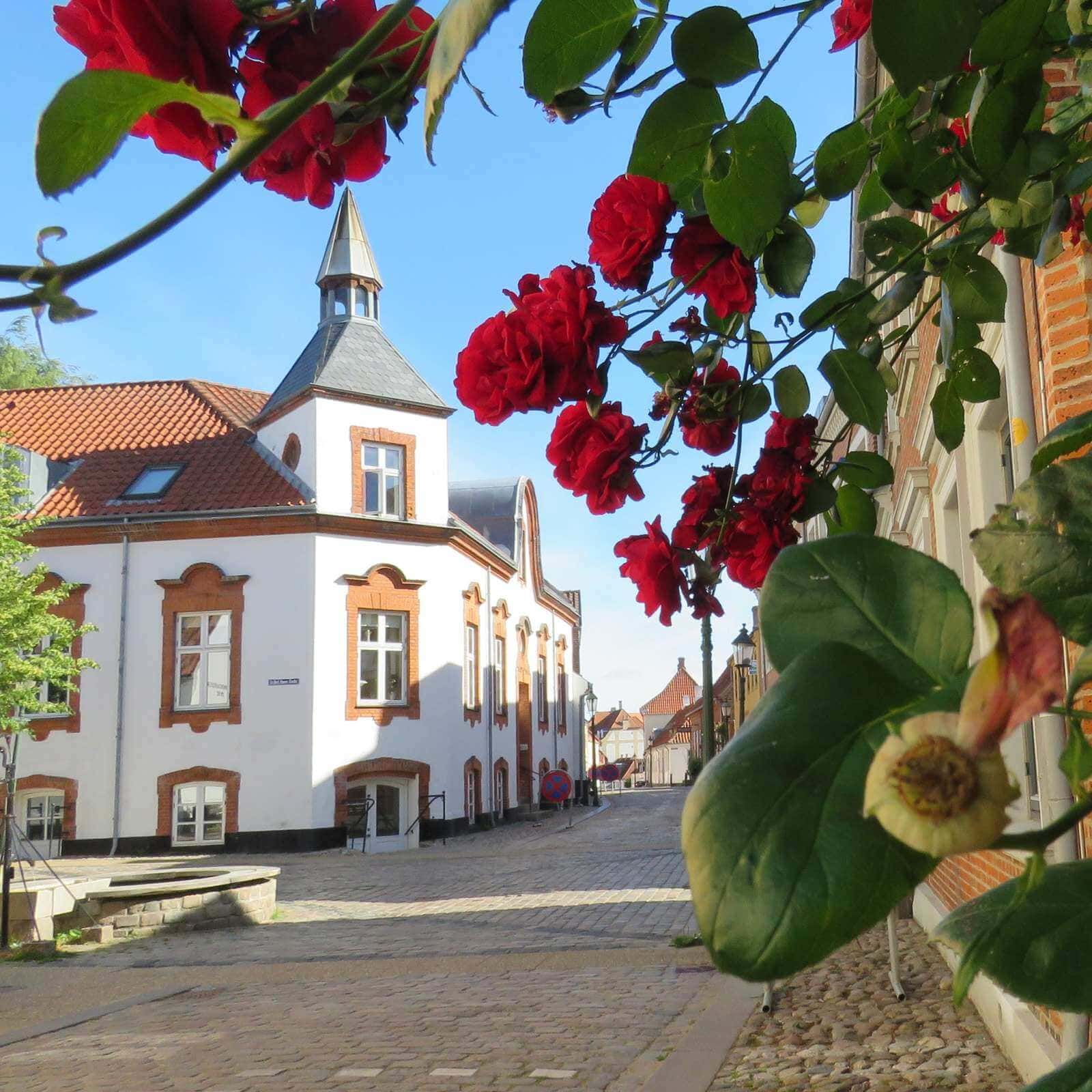
🌟 Remember to always get insurance before you travel to Denmark or anywhere else. SafetyWing is an affordable subscription travel insurance that you can purchase even after departure. Read my complete SafetyWing review here.
Article overview
How to get around from Aarhus
Aarhus, and Denmark in general, has a well-developed transportation system, making it easy to get around when traveling. I love staying in Aarhus and doing day trips all around Jutland and Funen. Here are the best options for getting around Denmark:
Car rental in Aarhus
Renting a car is a good option if you want to explore remote areas or travel at your own pace. You can rent a car at many airports and train stations, and there are several international car rental companies operating in Denmark. In Aarhus, you can rent a car from the airport or just outside the city center.
Danmark is one of my favorite countries to drive in by myself. The roads are good, traffic is not too crazy and you can literally cover the entire country in a few days. I always rent cars from DiscoverCars, a comparison site that covers more than 10,000 destinations.
🚘 Check price and availability here >> Rental cars in Denmark
Public Transportation
Denmark’s public transportation system is extensive and efficient, with buses, trains, and metros connecting cities and towns across the country. You can purchase tickets at train stations, bus terminals, and online.
The Rejsekort is a rechargeable travel card that can be used on trains, buses, and metros, and can be purchased at train stations and online. You can also purchase tickets from the machines at larger stops. Use the app Rejseplanen to find departure and arrival times, nearest stops, prices and maps.
Trains in Denmark are run by DSB, and you can find all the information you need on dsb.dk.
Biking
If we Norwegians are born with skis on our feet, Danish people are born on bikes. I think it’s the one country that can rival Amsterdam in sheer number of bikes.
And that’s because Denmark is a very bike-friendly country, and biking is a popular way to get around. You can rent bikes at many train stations and bike rental shops, and there are bike lanes and paths throughout the country.
Taxis are widely available in Denmark, and can be found at taxi stands in every city. Since apps like Uber and Lyft don’t operate in Denmark, the most used ride-hailing app is Moove. Using the Moove app, you book a taxi from wherever you are in Denmark to get to your destination.
Another popular ride-sharing app in Denmark is GoMore.dk, which offers carpooling, leasing, and private car rentals.
Walking
Denmark is a small country with many pedestrian areas and walking paths. Walking is a great way to explore cities and towns, and many attractions are within walking distance of each other.
Aarhus day trips map
Best day trips from Aarhus
1. Viborg
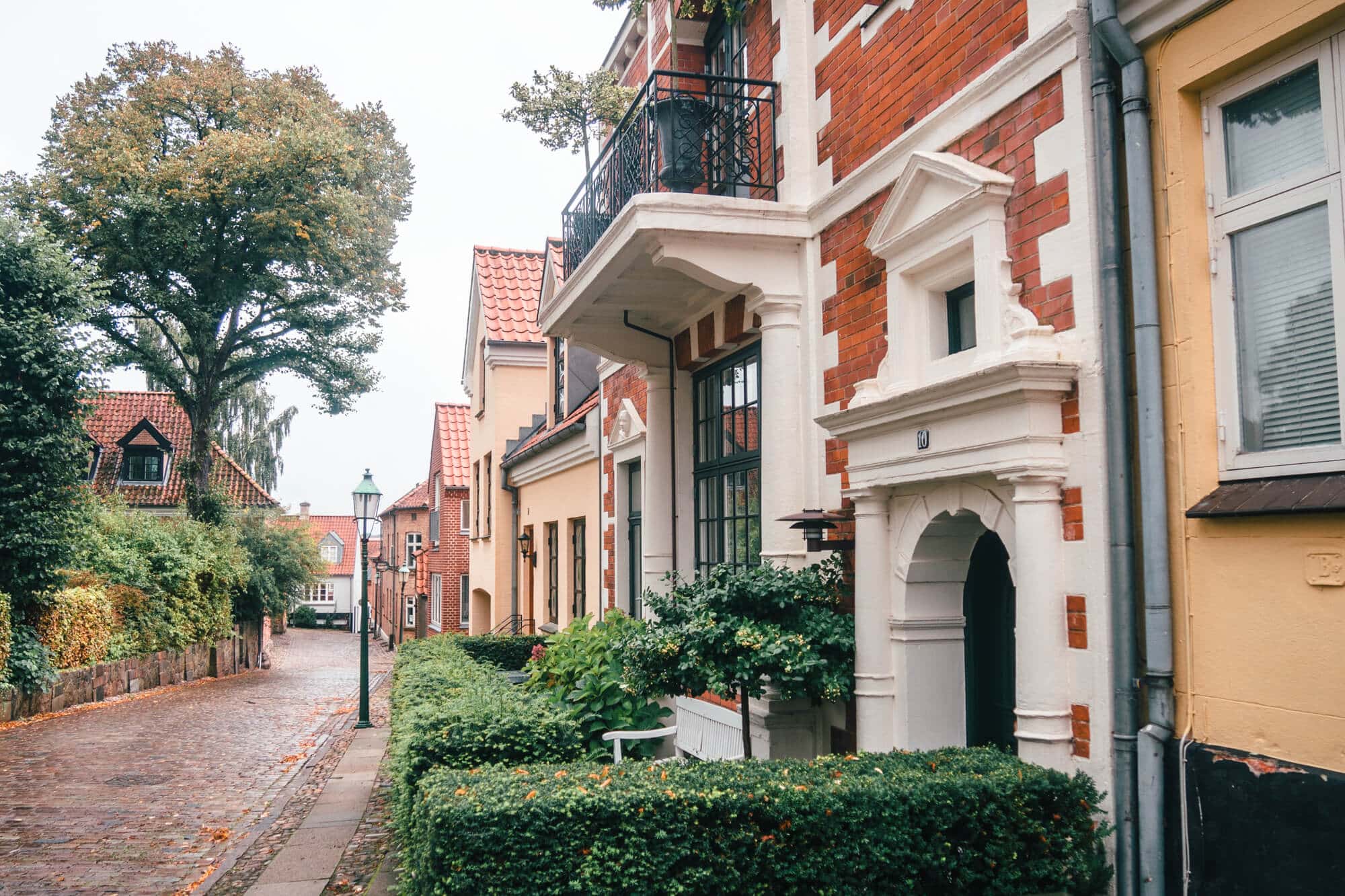
Viborg is one of Denmark’s oldest cities, with traces all the way back to ancient times. In fact, they celebrated 1000 years in 2018. In honor of this anniversary, the city put on an art exhibition showing Viborg’s long history through collage art by the amazing artist Sergei Sviatchenko.
We had the pleasure of getting invited inside his personal workshop to look around and even got some prints to take home. What a cool experience! Definitely check out the “Tribute to Viborg Contemporary Collage Art Exhibition” if you find yourself in Viborg during October this year.
The best thing to do in Viborg is to explore on foot to fully appreciate all the historic landmarks and quaint little shops that line the cobblestone streets.
Distance from Aarhus: Around 60 kilometers, it takes about 1 hour and 5 minutes with train and car.
How to get there
The easiest way to get from Aarhus to Viborg is by car. The distance between the two cities is about 65 kilometers, and the drive takes approximately 1 hour and 6 minutes. You can rent a car in Aarhus or use a ride-sharing app to find a driver.
Another option is to take a train from Aarhus to Viborg. The train journey takes approximately 1 hour and 5 minutes, and there are several trains running throughout the day. You can also take a bus, but you have to make a change in Silkeborg.
Top things to do
Nytorv
Nytorv is Viborg’s geographical center, indicated by the “Zero stone” in the middle of the square. It actually used to be a cemetery up until 1584 when King Frederick II ordered it to be paved over.
There are still remnants of human bones below the pavement, but don’t let that creepy thought stop you from sitting down and enjoying some snacks and drinks at 11 Gastro & Bar.
Viborg Domkirke
With its two striking towers, Viborg Cathedral is without a doubt the city’s most recognizable landmark. Parts of the church date back to the 1100s, but due to several fires, it has been rebuilt many times over the years.
The construction as you see it today was finished around 1876. The interior is even more beautiful than the exterior so it’s well worth it to take the time to see the impressive frescoes, bronze angels and gold altar inside.
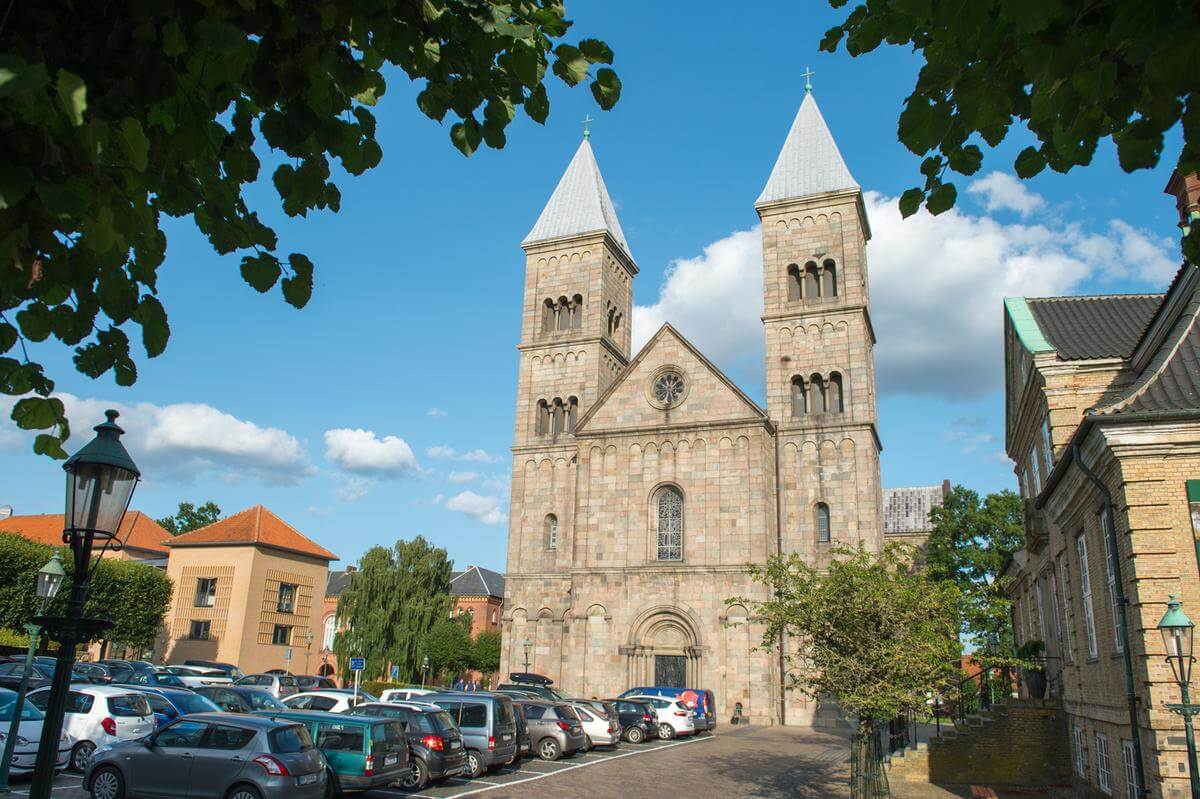
Latinerhaven
The great fire of 1726 destroyed most of Viborg’s old town, leaving only what we call fire plots. While most of the city was later rebuilt, some traces of the fire still remain today. One of these is Latinerhaven, a lush garden brimming with perennials, Rhododendrons and herbs.
Søster Lagkage
At Søster Lagkage, a bakery run by two sisters, they put quality and passion before everything else. All their mouthwatering cakes and pastries are made from scratch using only the best ingredients, organic whenever possible.
Not only are the baked goods to die for, but the vintage decor and personal nick-nacks make the café feel warm and welcoming. You literally feel like you’re in the sister’s living room, which I think is so special.
We were lucky enough to get to taste an array of their specialties. My favorite was the glazed Danish pastry with pistachios (if I remember correctly), it literally melted in my mouth. Yum!
Sct. Mogens Gade
Sct. Mogens Gade (street) is a long line of colorful brick houses in the oldest and best-preserved part of Viborg. This is where the nobility and artisans used to live way back in the Middle Ages.
Below you can see the old bakery which has been adorned by a gold and black sign with a rather strange poem reading something like this; “The baker is, unfortunately, dead, so he is no longer baking bread”. If you’re an avid photographer like me, you’ll love this place!
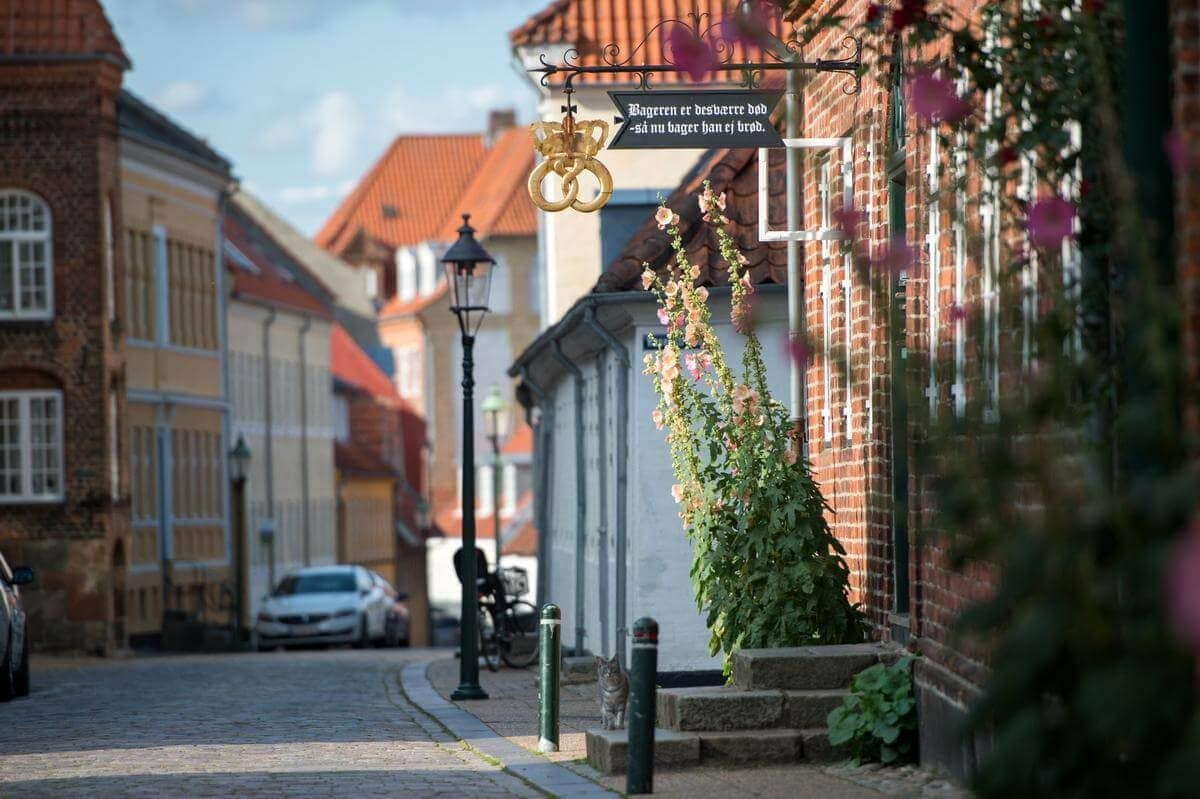
Hans Tausens Minde
Though it might not be the most exciting place for everyone, I think it’s well worth it to stop by Hans Tausens Minde, the oldest garden in Viborg. This is yet another cemetery turned garden and today it holds two monuments honoring the 300th and the 475th anniversary of the Reformation. The latter, a rather interesting-looking sculpture by Bjørn Nørgaard, will get your wheels turning.
Borgvold Park
Sitting on the bank of Nørresø Lake, Borgvold is not only Viborg’s oldest Park but in my mind also the most picturesque part of the city. Winding pathways, colorful flowers, bridges and lush greenery as far as the eye can see. Go for a relaxing stroll in the morning, settle down on the grass for a romantic picnic or rent a canoe and head out on the water. But whatever you do, don’t miss this place!
Dahl’s Vinhandel
In the Latin Quarter just down the street from Viborg Cathedral you’ll find Dahl’s Vinhandel, a wine specialty shop with a history stretching back as far as the early 1800s. Not only is their selection of wine and spirits extremely impressive but the whole shop oozes with history and charm, which makes visiting the store an experience in itself. If you’re into unique wine, exotic coffee and decadent chocolate in all shapes and sizes, Dahl’s Vinhandel is the place for you!
Just outside their door, there’s a small art installation with tiny stars in the pavement. I don’t think I would even have noticed if it wasn’t pointed out, but wow how cool!
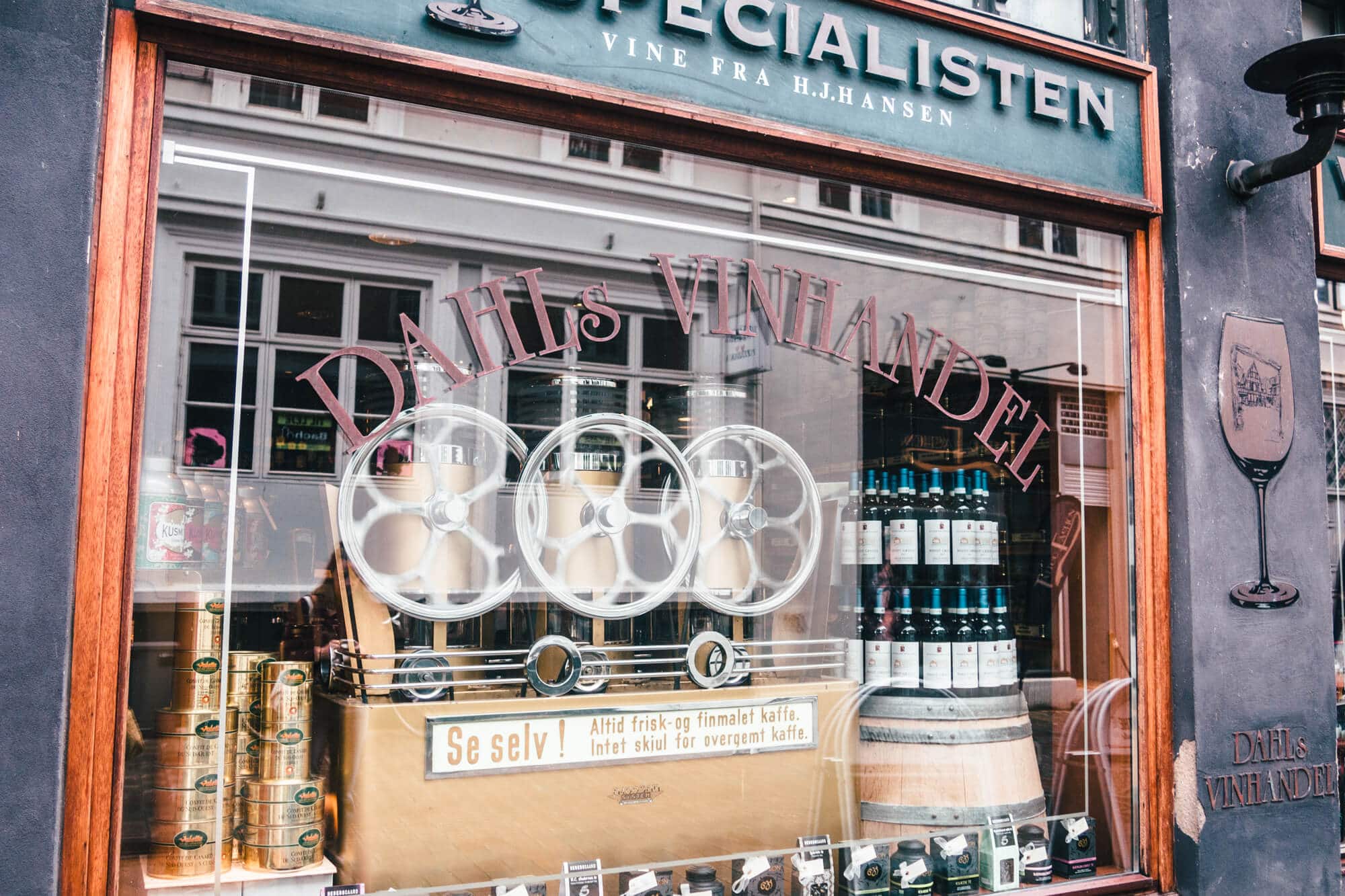
Brygger Bauers Grotter
Dinner in Brygger Bauers Caves was one of the highlights of the trip for me. This unique restaurant has its own beer and wine cellar and serves up some delicious and innovative tapas dishes. I couldn’t stop eating!
Viborg Bryghus
Finish the day off with a beer tasting and history lesson at Viborg Bryghus, a microbrewery in the heart of the city. Every Friday and Saturday you have the opportunity to participate in “Bryg & Brosten” (Brew & Cobblestone), a two-hour tour where you learn the history behind many of the places I mention above and the people that have given names to some of Viborg Bryghus’ beers.
The tour ends with a beer tasting in the brewery room at Viborg Bryghus and costs 150kr per person. If you want to skip straight to the beer, the tasting trey you see below is only 89kr. And to my surprise, I actually really enjoyed some of the dark ones.
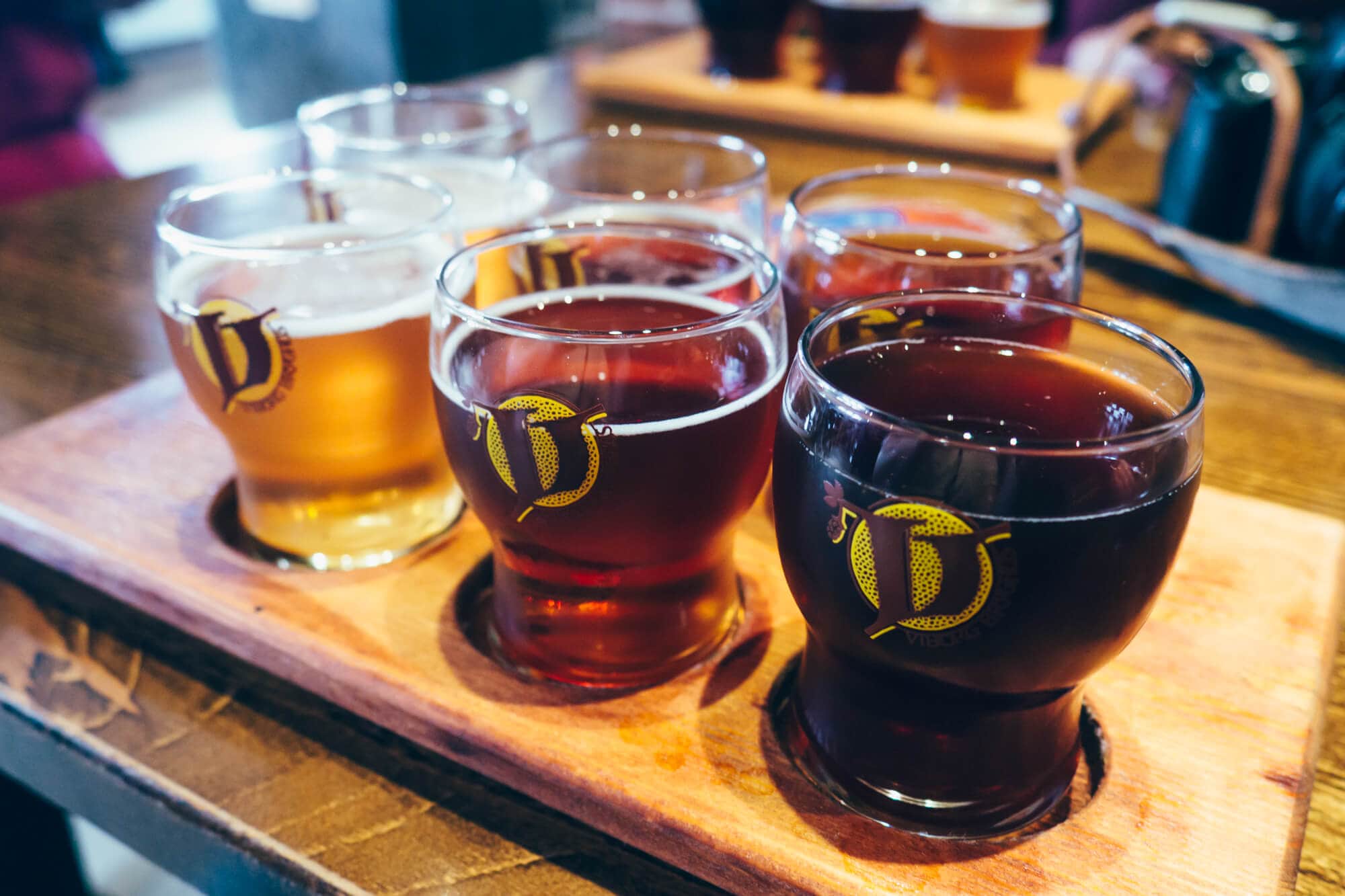
2. Skanderborg
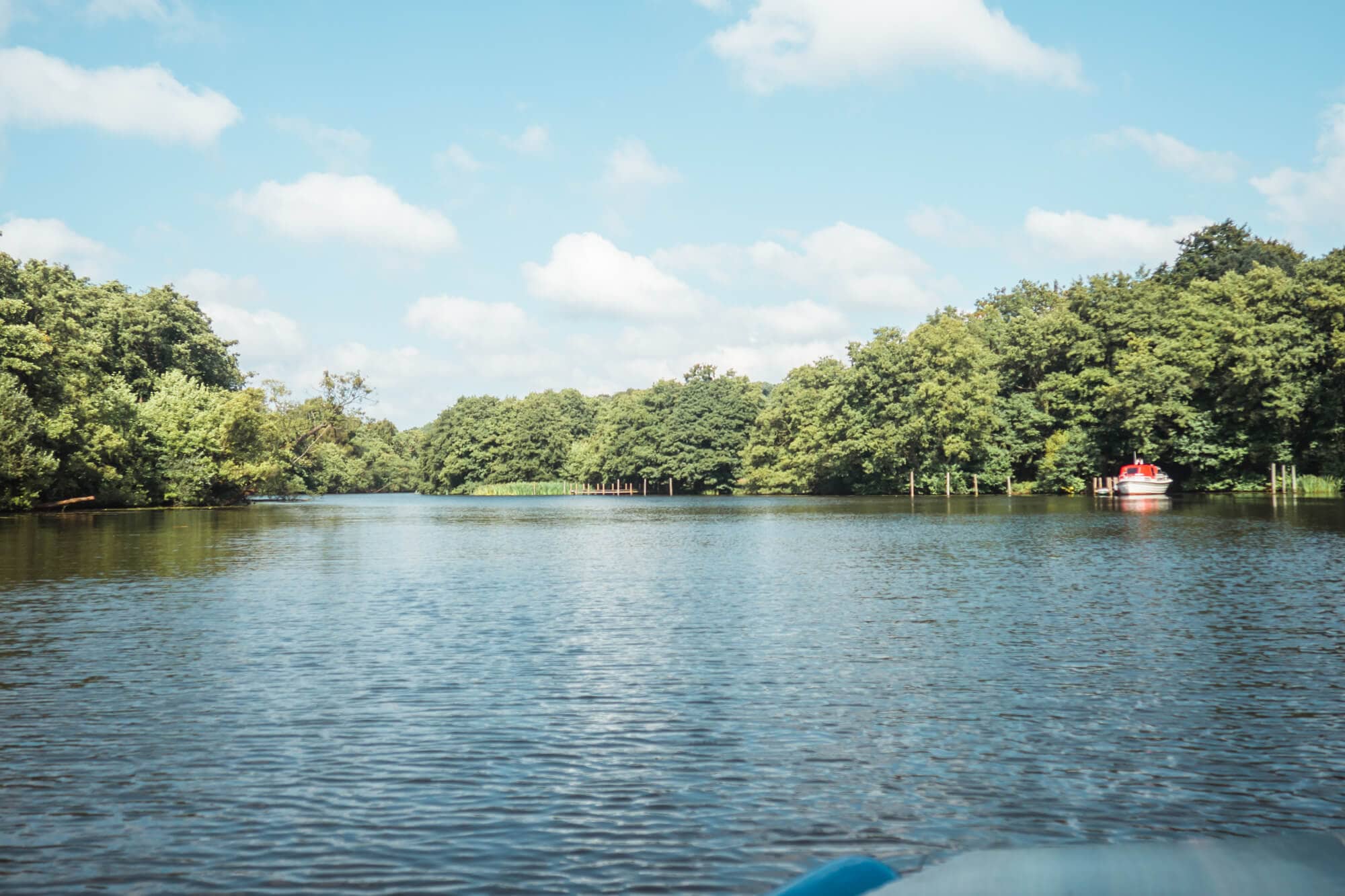
Skanderborg is located about 30-40 minutes away from Aarhus in the Lakelands, an area known for its outstanding natural beauty.
The varied landscape of hilltops and lakes around Ry and Skanderborg is especially great for outdoor activities like hiking, biking and sailing. Skanderborg is the perfect day trip from Aarhus if you want to explore the outdoors.
How to get there
The easiest option is to rent a car and drive from Aarhus to Skanderborg. The distance between the two cities is about 27 kilometers, and the drive takes approximately 25-30 minutes.
Trains run between Arrhus and Skanderborg all day, taking just 15 minutes. If you prefer to go by bike, expect to spend around 40 minutes on the road.
Top things to do
Our day in the Lakelands started at Ry Harbor where we boarded “Solbaaden”, a fully solar-powered and CO2-neutral boat. It was such a nice and relaxing way to explore the area. We could even hear the birds chirp and the bees buzz as there was no noise coming from the motor.
Hotel Julsø
After the boat trip, we were greeted by the staff at Hotel Julsø, an impressive building standing right on the water’s edge at the foot of Himmelbjerget.
Hotel Julsø’s history goes back more than 150 years and it’s just that nostalgia that makes this place so special. The interior is painted white and green and gives the feeling of stepping into a fancy 1920s restaurant.
Unfortunately, the beautiful Hotel Julsø burned down in 2020. A new hotel is on its way and you can still enjoy the peaceful surroundings.
Himmelbjerget “The Sky Mountain”
All of us Norwegians on the trip were absolutely sure that Himmelbjerget is the highest “mountain” in Denmark. But apparently, that’s not the case. In fact, it’s only the 7th highest hill at 147 meters above sea level.
But what it lacks in height it makes up for in scenic surroundings, making it one of Denmark’s finest and most visited natural landmarks. And that’s how it’s been ever since 1861 when the old steamboat Hjejlen made its first journey from Ry. Hjejlen and other tour boats sail from Ry and Silkeborg to Himmelbjerget in the summer months.
You also have the option to drive, bike or walk. From Ry, there’s only about 7 km to Himmelbjerget through the forest and along the lakes. It’s flat all the way to the foot of the mountain and the hike to the top takes about 30 minutes and is doable even if you’re not in the greatest shape.
Once you reach the top you can climb the tower for an even more spectacular view, enjoy some refreshments at Hotel Himmelbjerget, play in the playground or browse the souvenir shops. There’s also a parking lot on the top for those who would like to drive.
History
Visit Øm Abbey and experience the life of a monk in the Middle Ages. Go for a train ride on the vintage Bryrup-Vrads Railway which runs on a 5 km long section of the Horsens-Bryrup-Silkeborg Railway that closed in 1968. It is said to be “The most beautiful Railway in Denmark”.
Or visit Skanderborg Bunker Museum, Luftwaffe’s headquarters on the banks of Skanderborg Lake.
3. Silkeborg
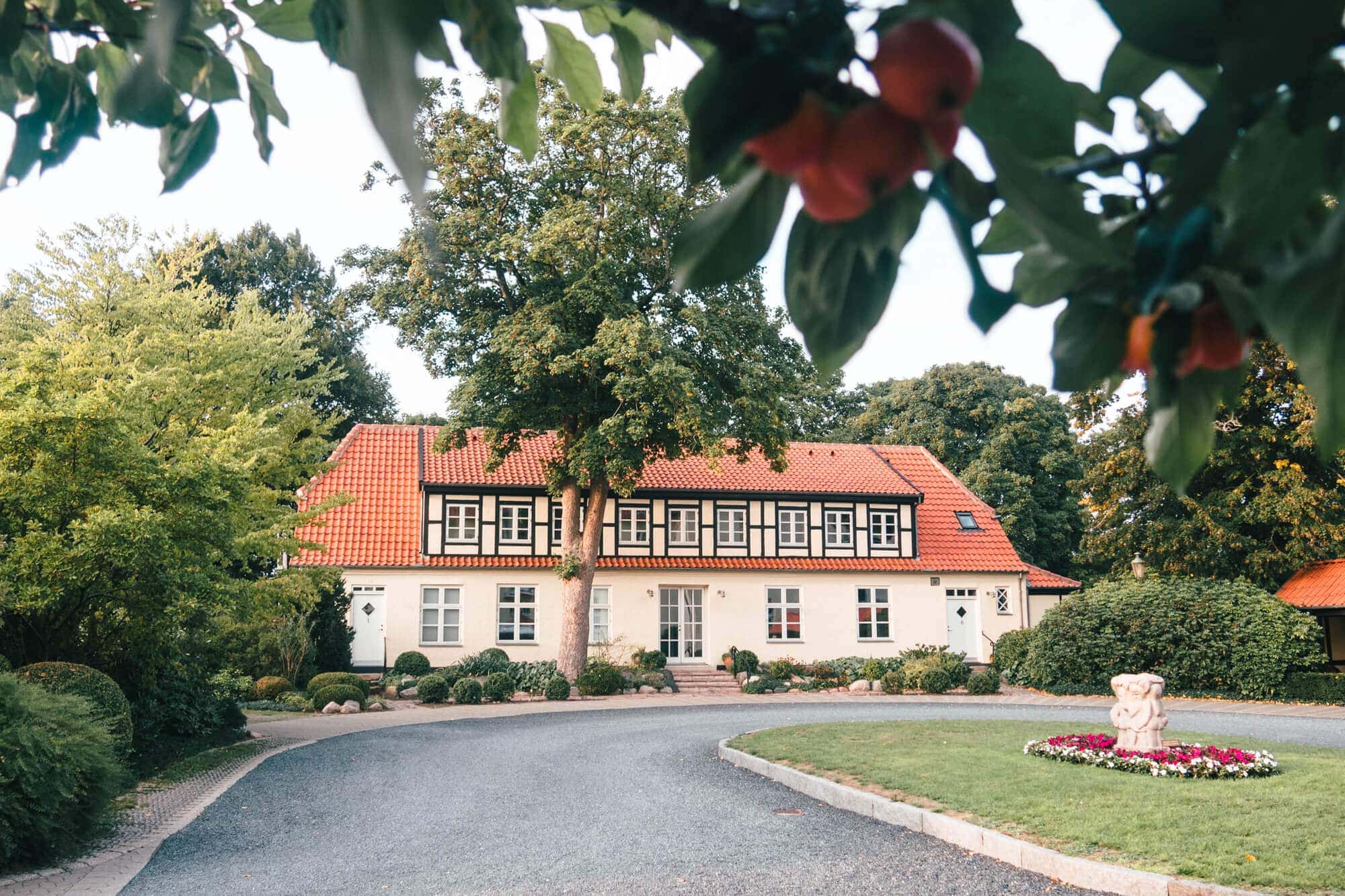
Since the 1800s, Silkeborg has been famous for its bath and health resorts, attracting thousands of Danes every year. This part of the country has always been where you go when you need to regain energy and unplug from the stresses of everyday life.
How to get there
The easiest way to get from Aarhus to Silkeborg is by car. The journey takes around 40 minutes and there are many parking options.
There are also regular train services operated by Danish State Railways (DSB) that run between Aarhus and Silkeborg. The journey takes around 45 minutes and trains run approximately every hour.
Another option is to take a bus from Aarhus to Silkeborg. It takes about 1 hour and 15 minutes, and there are several bus operators that run services between the two cities, including Midttrafik and Arriva.
Top things to do
To get in touch with nature go canoeing on Gudenå, Denmark’s longest river or hike Hærvejen, an ancient road in a stunning rural setting. Whether you want a romantic getaway or an active holiday, Silkeborg is the place to be!
Gl. Skovridergaard Hotel
We got to spend a night at Gl. Skovridergaard, a charming, old hotel set in a perfectly manicured garden on the outskirts of town. The oldest building on the property dates back to 1798 and has been used as both a royal residence, spa and sanatorium over the years.
Come evening we were treated to an impressive five-course meal in their restaurant, Orangeriet. I don’t know if it was due to all the wine I consumed or the big, comfortable bed, but I slept like a baby that night. So nice!
🌟 Best place to stay in Silkeborg >> Gl. Skovridergaard; BW Premier Collection
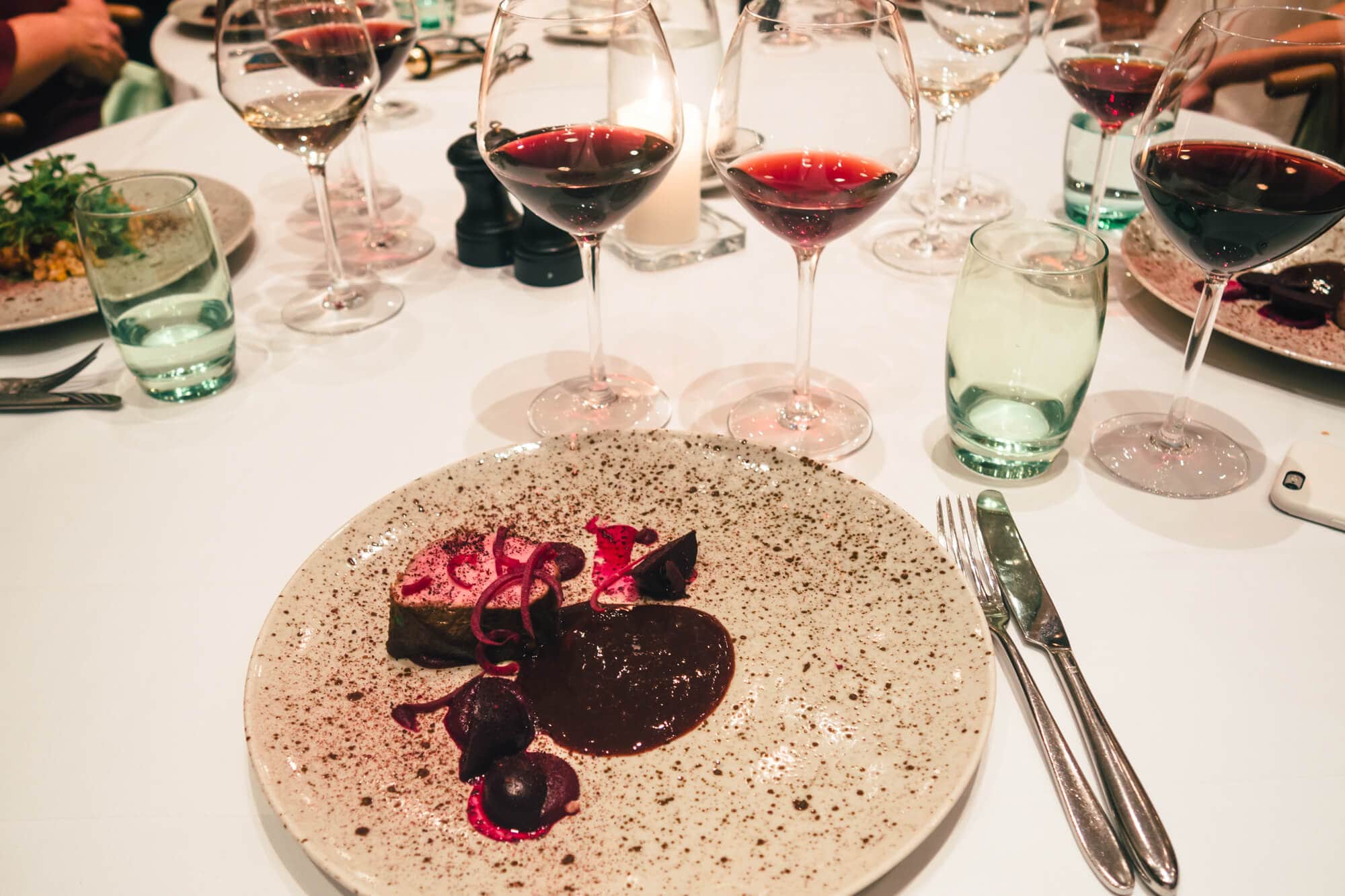
Art Centre Silkeborg Bad
Silkeborg Bad opened as a health resort in 1883 and people would come from all over the country to receive treatment for all sorts of diseases and ailments. The mineral-rich water from the spring “Arnakkekilden” was instrumental to most of their treatments.
During the war, the property was seized by the Germans and used as military headquarters before later being renovated and reopened as a spa in the 50s.
These days I recommend visiting Art Centre Silkeborg Bad, which lies on the outskirts of Silkeborg right next to Lake Ørnsø, for a different kind of art experience. All year round they host exhibitions of contemporary art, usually three or four at a time.
One of the current exhibitions, “Beyond the Body”, brings up all the thoughts and questions we humans have about death. Like “what happens next?” and “is there a soul?”. I have to admit, I found it weirdly captivating and a little bit creepy. Just take a look below!
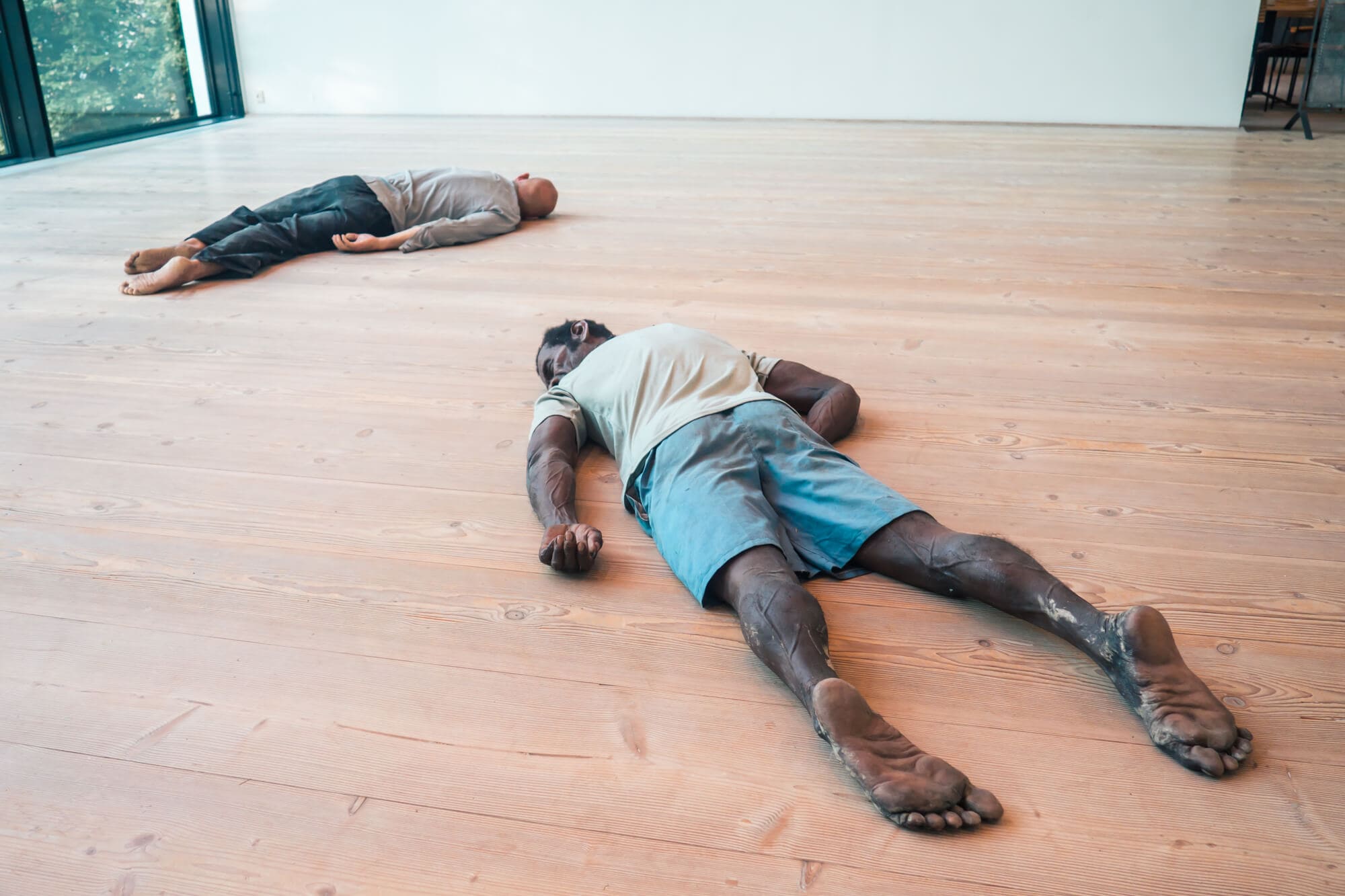
The surrounding park, which boasts more than 40 interesting sculptures, is open to visitors all year, free of charge. Some of the sculptures have a home in the park on a permanent basis (a few since 1929!!), while others have been placed there temporarily.
The Art Centre also includes a historical section that tells the story in words and photos of when the property housed the health resort.
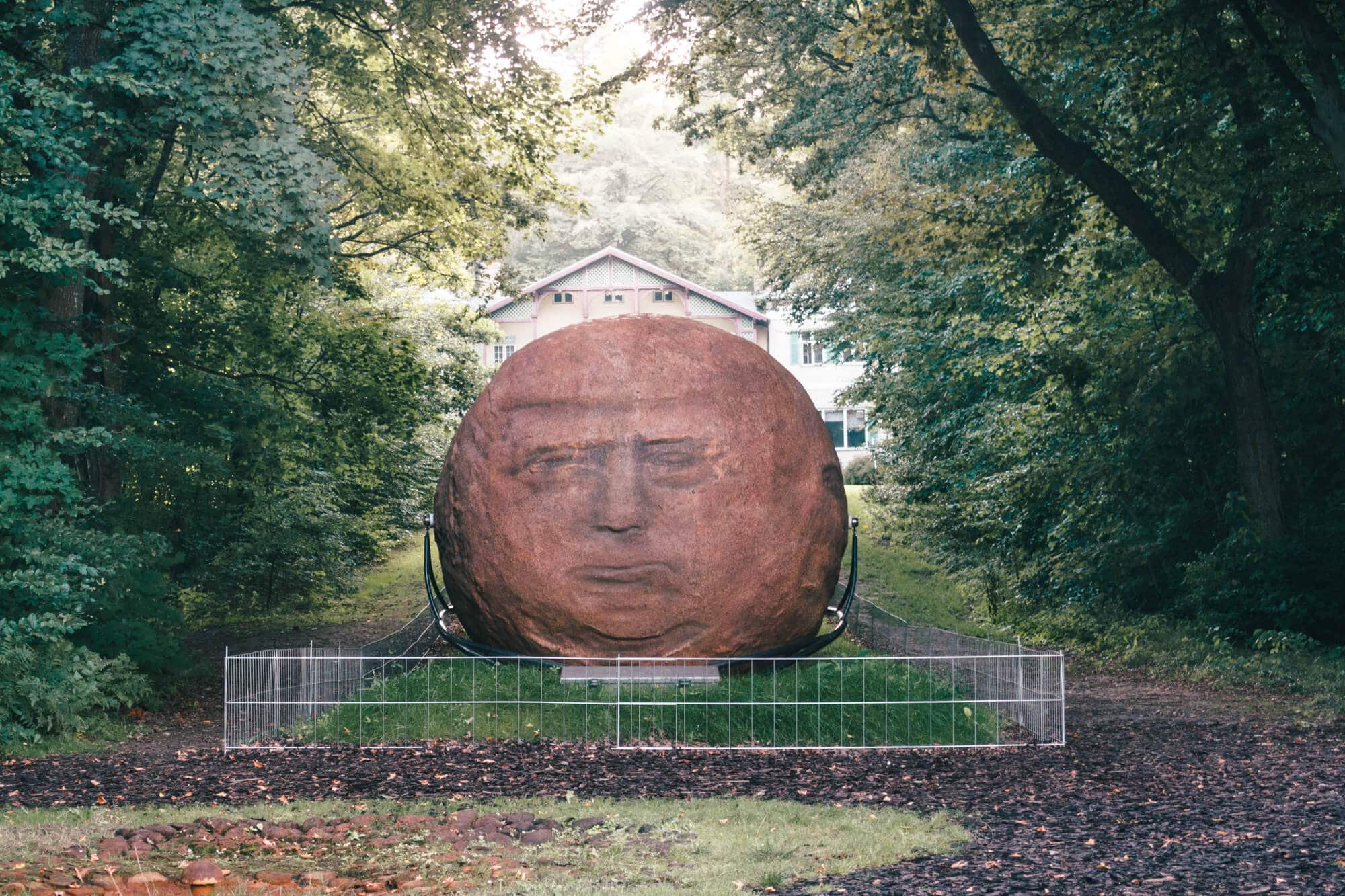
Although Silkeborg is known for its peace and serenity today, few are aware that the German General Staff in Denmark had its headquarters in Silkeborg from 1943 to 1945. These days, you can enter the main bunkers at Silkeborg Bad with a guide or explore the few open all day by yourself.
4. Ebeltoft
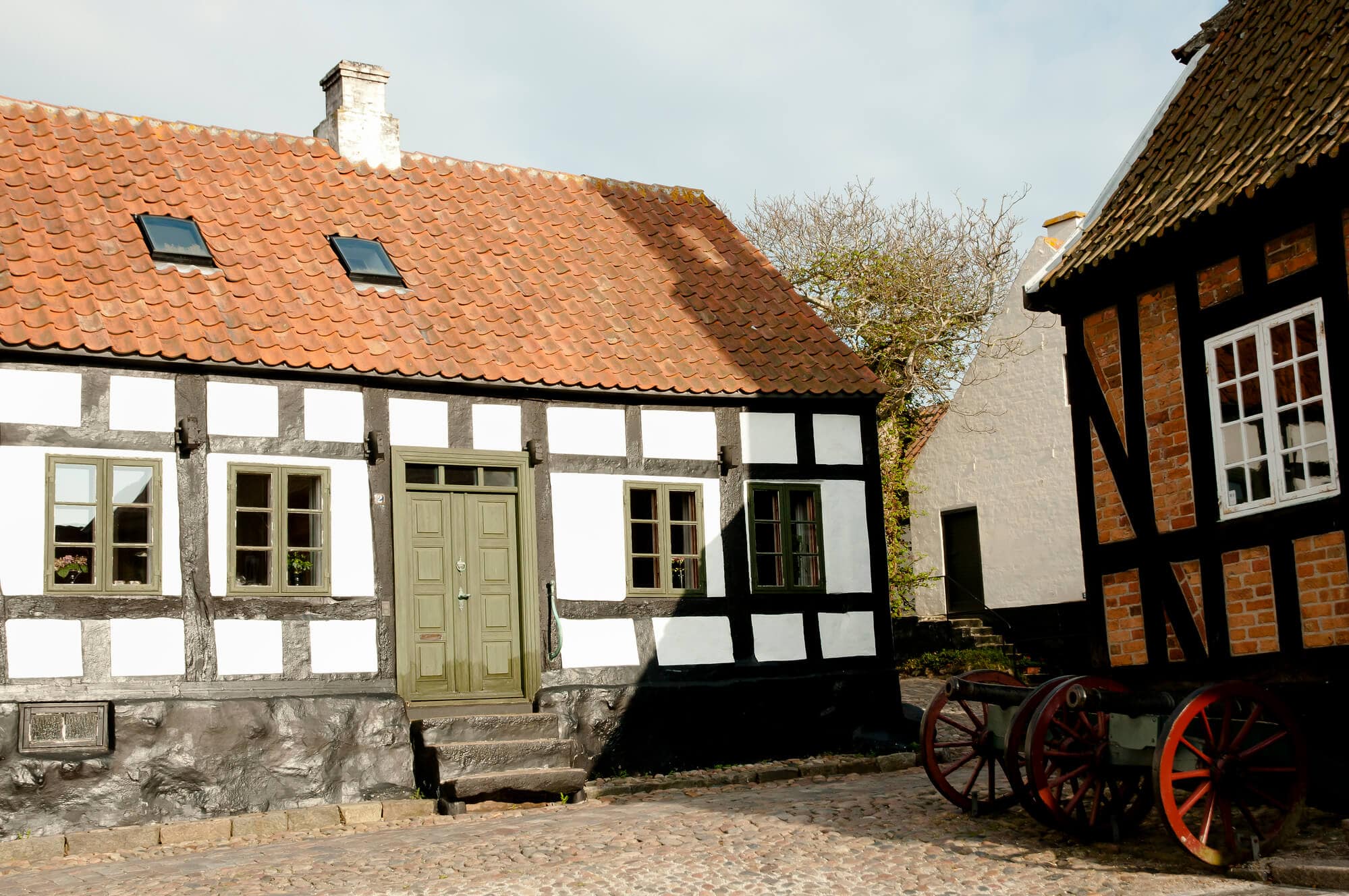
Ebeltoft is a charming coastal town located on the eastern coast of Jutland and one of my favorite day trips from Aarhus. The town is known for its picturesque cobblestone streets, historic half-timbered houses, and beautiful harbor.
Ebeltoft is a popular tourist destination, attracting visitors from around the world with its stunning natural scenery, rich cultural heritage, and vibrant arts scene.
How to get there
The easiest way to get from Aarhus to Ebeltoft is by car, remember to check out DiscoverCars if you’re renting. The distance between the two cities is about 50 kilometers, and the drive takes approximately 45 minutes. You can also take a bus directly from Aarhus main bus station, but it will take around 1 hour and 30 minutes.
Top things to do
One of the most popular attractions in Ebeltoft is the historic Ebeltoft Old Town, which dates back to the 17th century and features well-preserved half-timbered houses, narrow streets, and cozy cafes.
The town is also home to several museums, including the Ebeltoft Glass Museum and the Frigate Jylland Museum, which showcases the history of Danish naval ships.
If you visit during the warmer months, you can enjoy Ebeltoft’s beautiful beaches, which are popular spots for swimming, sunbathing, and water sports. The town’s harbor is another popular attraction, with its colorful boats, seafood restaurants, and lively atmosphere.
In addition to its natural beauty and cultural attractions, Ebeltoft is also a hub for artists and creatives, with several galleries and workshops showcasing the work of local artists and artisans.
5. Moesgaard Museum and Manor
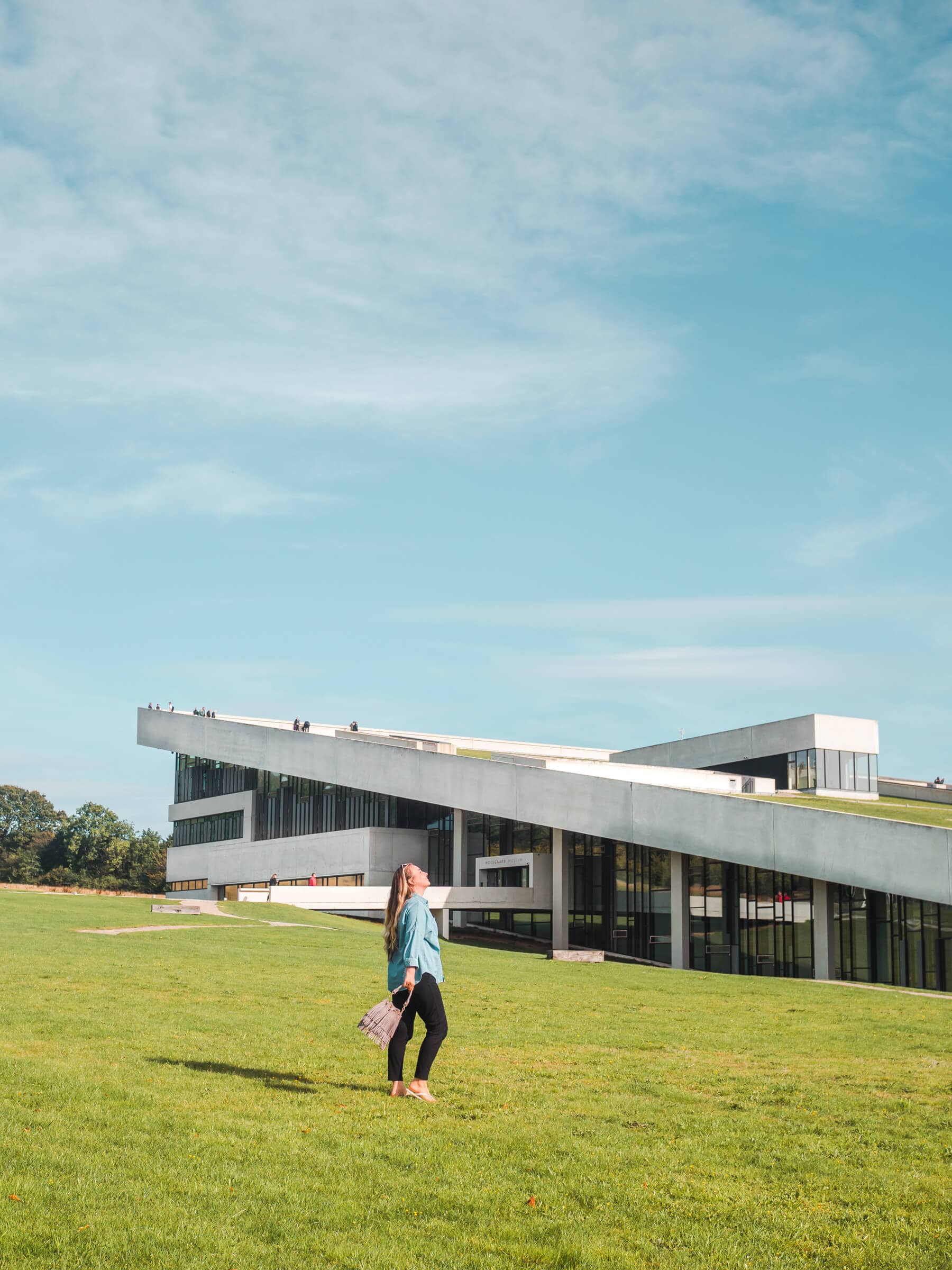
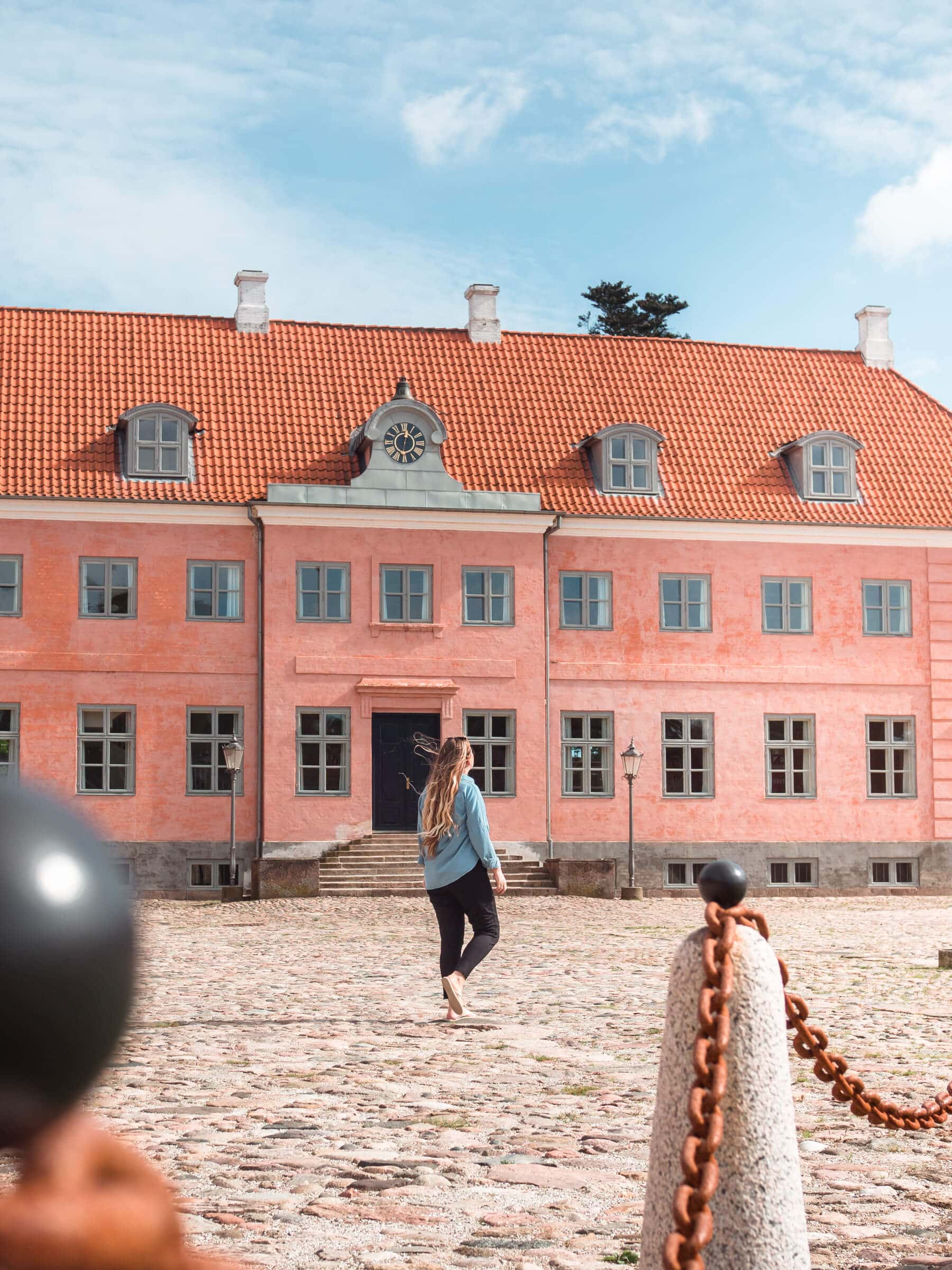
Moesgaard Museum and Manor is a must-visit destination on a day trip from Aarhus. It is one of my favorite museums in the world, and the building is an attraction in itself. Located just 10 kilometers south of Aarhus, Moesgaard Museum and Manor is easily accessible by car, bus, or bike, making it the perfect day trip from the city.
The museum is situated on a beautiful estate that dates back to the 16th century and is surrounded by lush forests and rolling hills. It is dedicated to the history and evolution of humans, with multi-sensory exhibits ranging from prehistoric times to the present day.
One of the highlights of the museum is the Grauballe Man exhibit, which features the well-preserved remains of a man who lived during the Iron Age, 2000 years ago. The exhibit provides a fascinating glimpse into the life and culture of Denmark’s ancient inhabitants.
In addition to the museum, Moesgaard Manor is also worth a visit. The manor dates back to the 16th century and features beautiful architecture and stunning gardens. During the weekend you can take a guided tour of the manor and learn about its fascinating history.
6. Rubjerg Knude Fyr and Løkken
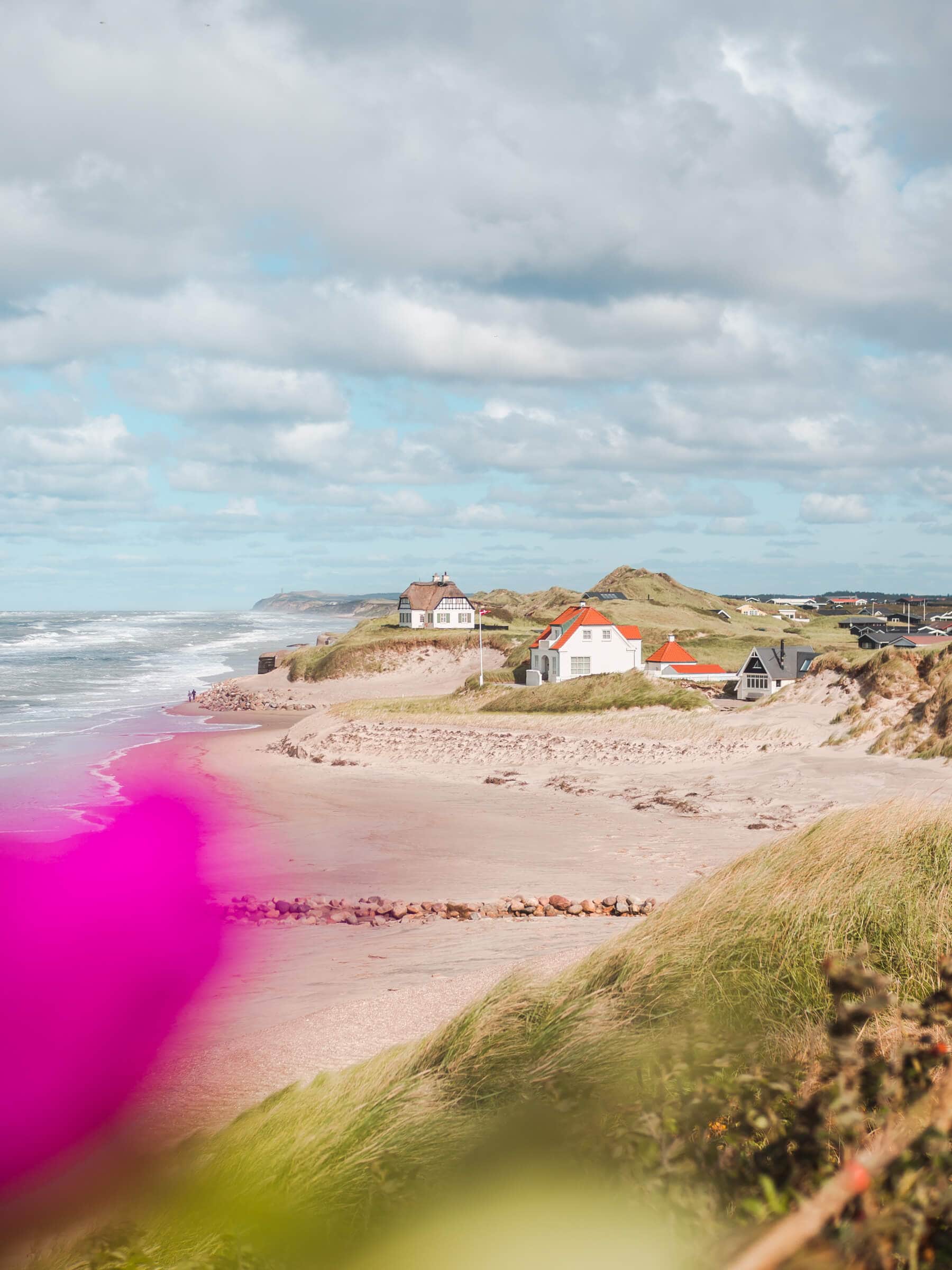
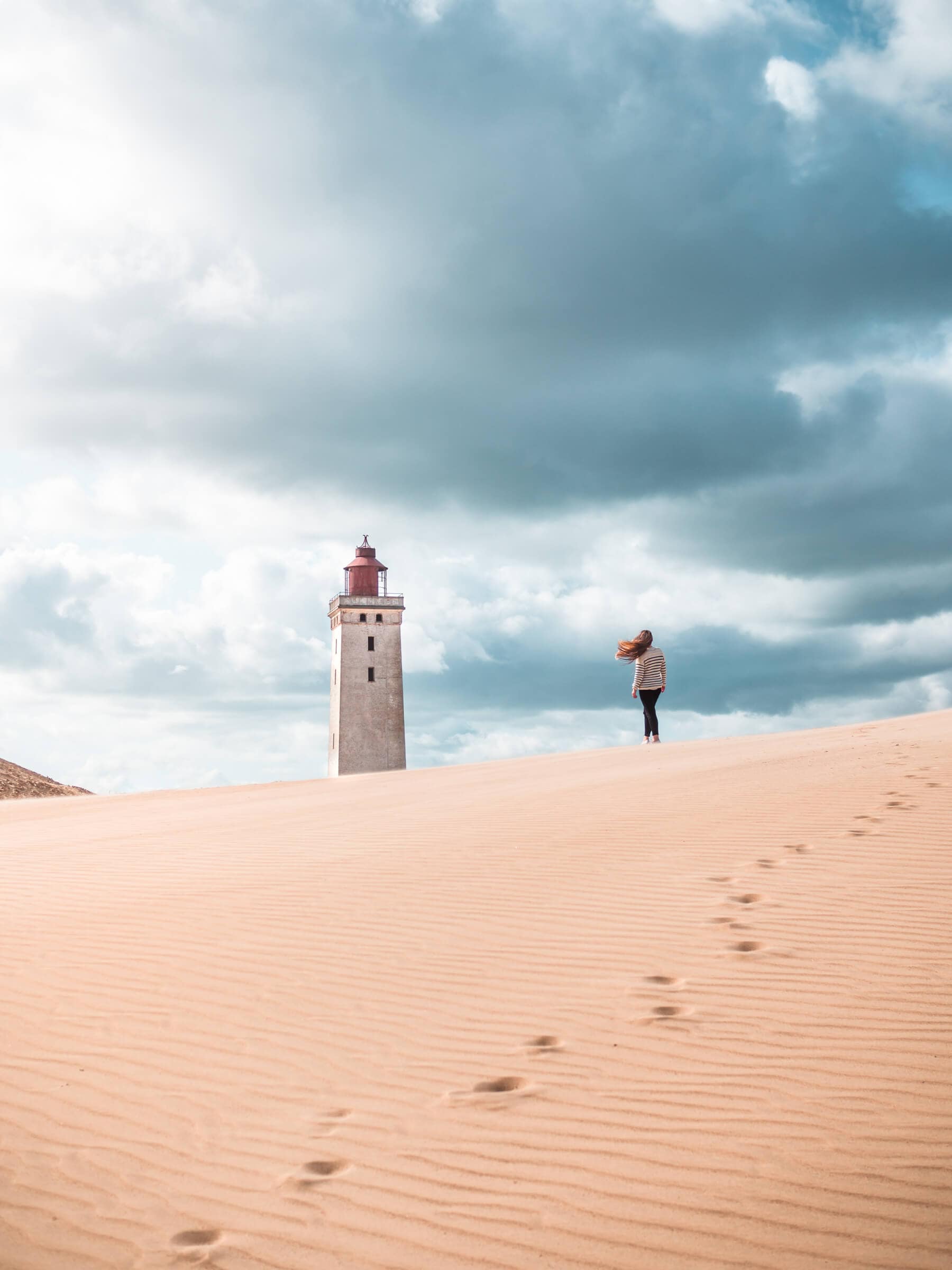
One of the coolest places you can visit on a day trip from Aarhus is Rubjerg Knude Fyr. Located about 2 hours northwest of Aarhus, the lighthouse is most easily accessible by car.
Rubjerg Knude Fyr is a historic lighthouse that was built in 1900 and stands 60 meters above sea level. It is situated on a sand dune and offers stunning views of the North Sea and the surrounding landscape. In October 2019, the lighthouse was moved 70 meters inland to secure it from erosion, caused by the North Sea.
One of the highlights of visiting Rubjerg Knude Fyr is hiking up the sand dune to the lighthouse. The hike takes approximately 15-20 minutes and offers breathtaking views of the coastline and the dunes.
You can also combine your day trip to Rudbjerg Knude with a stop in the charming village of Løkken. The most popular attraction in Løkken is its beautiful beaches, which are known for their soft sand dunes and clear waters.
Løkken is also known for its historic architecture, with several well-preserved buildings dating back to the 19th century. The town’s main street, Løkkensgade, is lined with charming shops, cafes, and restaurants, and is a popular spot for a leisurely stroll.
7. Odense
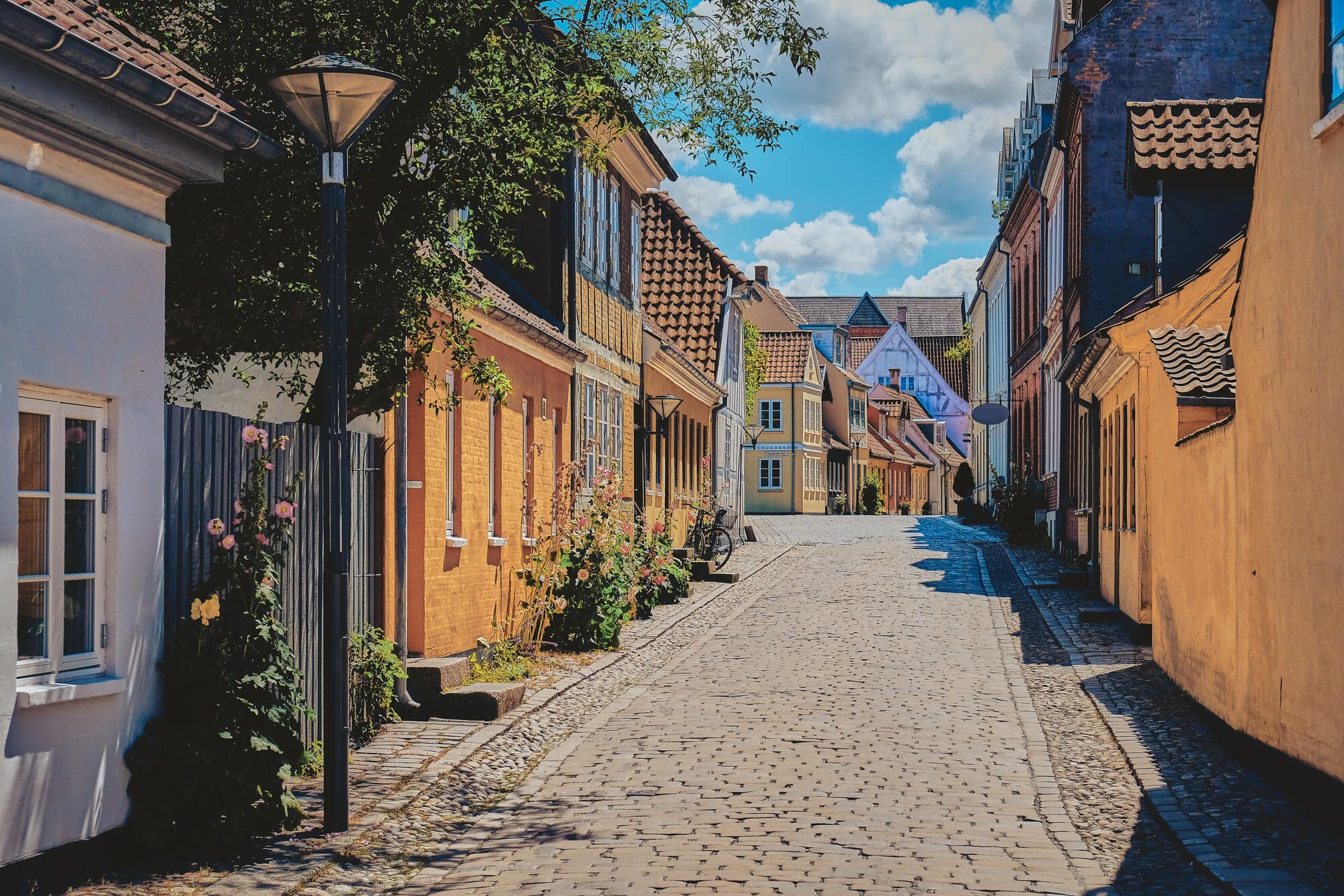
Odense is a beautiful city located on the island of Funen. It is the third-largest city in Denmark and is known for its rich history, charming streets, and vibrant cultural scene.
How to get there
The easiest way to get from Aarhus to Odense is by train. The train journey takes approximately 1 hour and 40 minutes, and there are several trains running throughout the day. Another option is to rent a car and drive the 150 kilometers, which takes around 1 hour and 50 minutes.
Top things to do
One of the most popular attractions in Odense is the birthplace and childhood home of Hans Christian Andersen, the famous Danish author. The Hans Christian Andersen Museum, located in the heart of the city, features original manuscripts, personal belongings, and interactive displays.
Another must-see attraction in Odense is the Odense Zoo, which is home to over 2,000 animals from around the world. The zoo is located in the scenic Munke Mose Park and offers a range of exhibits and activities for visitors of all ages.
Odense is also known for its charming streets and historic architecture. The city’s pedestrian streets are lined with shops, cafes, and restaurants, and are a popular spot for a leisurely stroll. Explore the city’s historic landmarks, including the Odense Cathedral, which dates back to the 13th century. Click here to book a guided walking tour for up to 15 people.
Odense is also a great place to experience Danish cuisine and nightlife. If you’re a foodie like me you’ll be excited to know that Odense is home to several Michelin-starred restaurants.
If you’re visiting during the warmer months I highly recommend this cruise on Odense River. It was so nice to relax on board while spotting landmarks and scenic spots like Odense Zoo and make a stop to explore the forest of Fruens Bøge.
🛥️ Check price and availability here >> River Cruise on the Odense River
8. Egeskov Castle
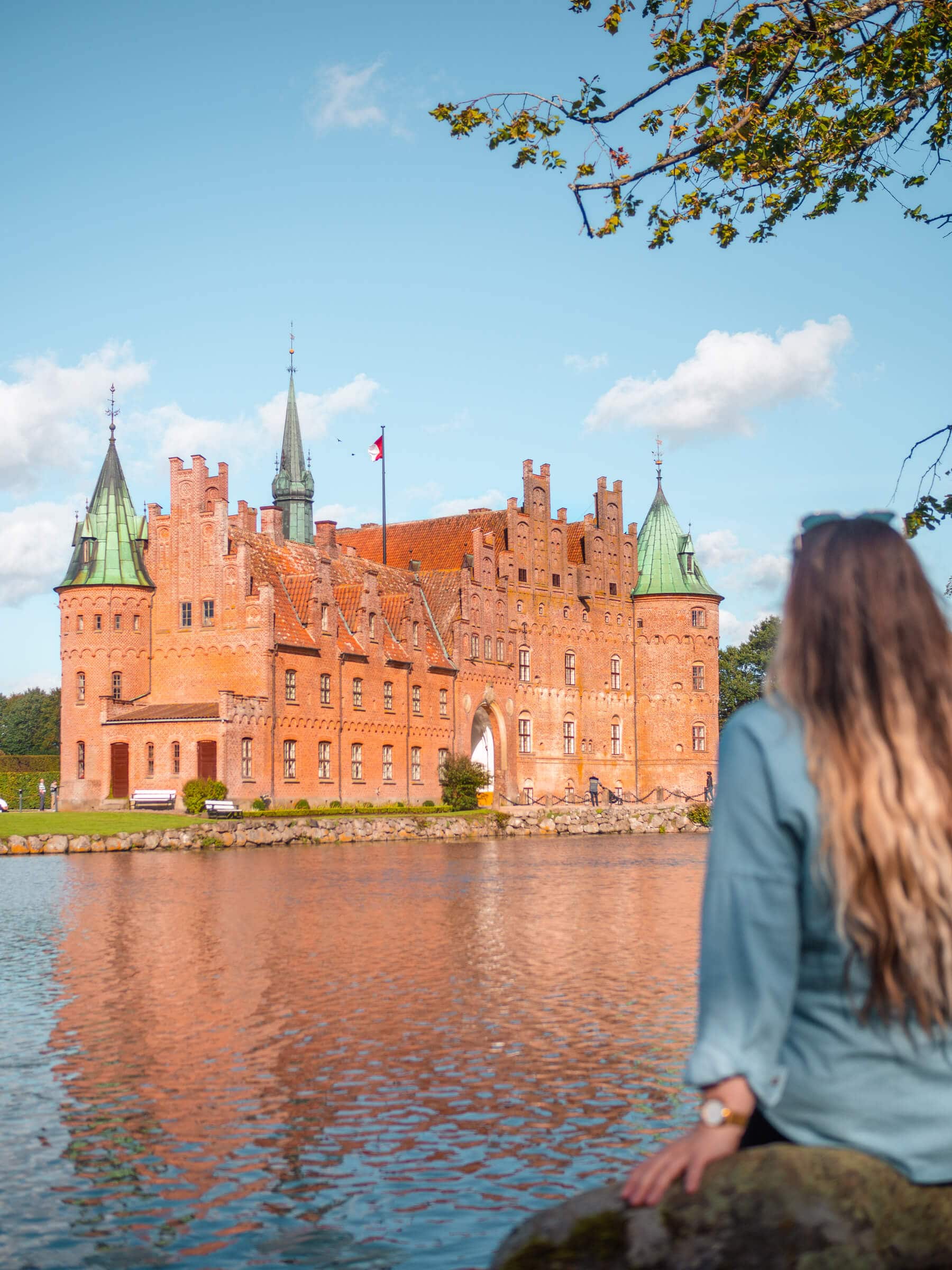
Egeskov Castle is a stunning Renaissance castle located on the island of Funen, not too far from Odense. The castle is considered one of the most beautiful historic buildings in Denmark and attracts visitors from around the world.
Actually, Denmark is home to many incredible castles, some of which you can stay in. My favorite is number 3.
How to get there
Egeskov Castle is easily accessible from Aarhus, making it a great destination for a day trip. The castle is located about 1.5 hours south of Aarhus and can be reached by car in 2 hours, or by train and bus in 3 hours.
If you go the public transport route, you’ll also have to do some walking. Remember to check the Rejseplanen app.
Things to do
One of the highlights of visiting Egeskov Castle is exploring the castle’s beautiful gardens. The castle is surrounded by stunning gardens, including a romantic garden, a water garden, and a maze garden. I love to just walk around and explore.
The castle dates back to the 16th century and is considered one of the best-preserved Renaissance castles in Europe. You can explore the castle’s interior, which includes several well-preserved rooms and exhibits showcasing the castle’s rich history.
In addition to the castle and gardens, Egeskov Castle is also home to several museums and exhibitions, including a classic car museum and a camping outdoor museum. There’s also a cafe in the rose garden where you can sit down and enjoy dishes made with herbs and vegetables from the kitchen garden. Such a treat!
If you prefer to visit a castle closer to Aarhus, I recommend Rosenholm, a well-preserved castle from the 1500s.
9. Søndervig
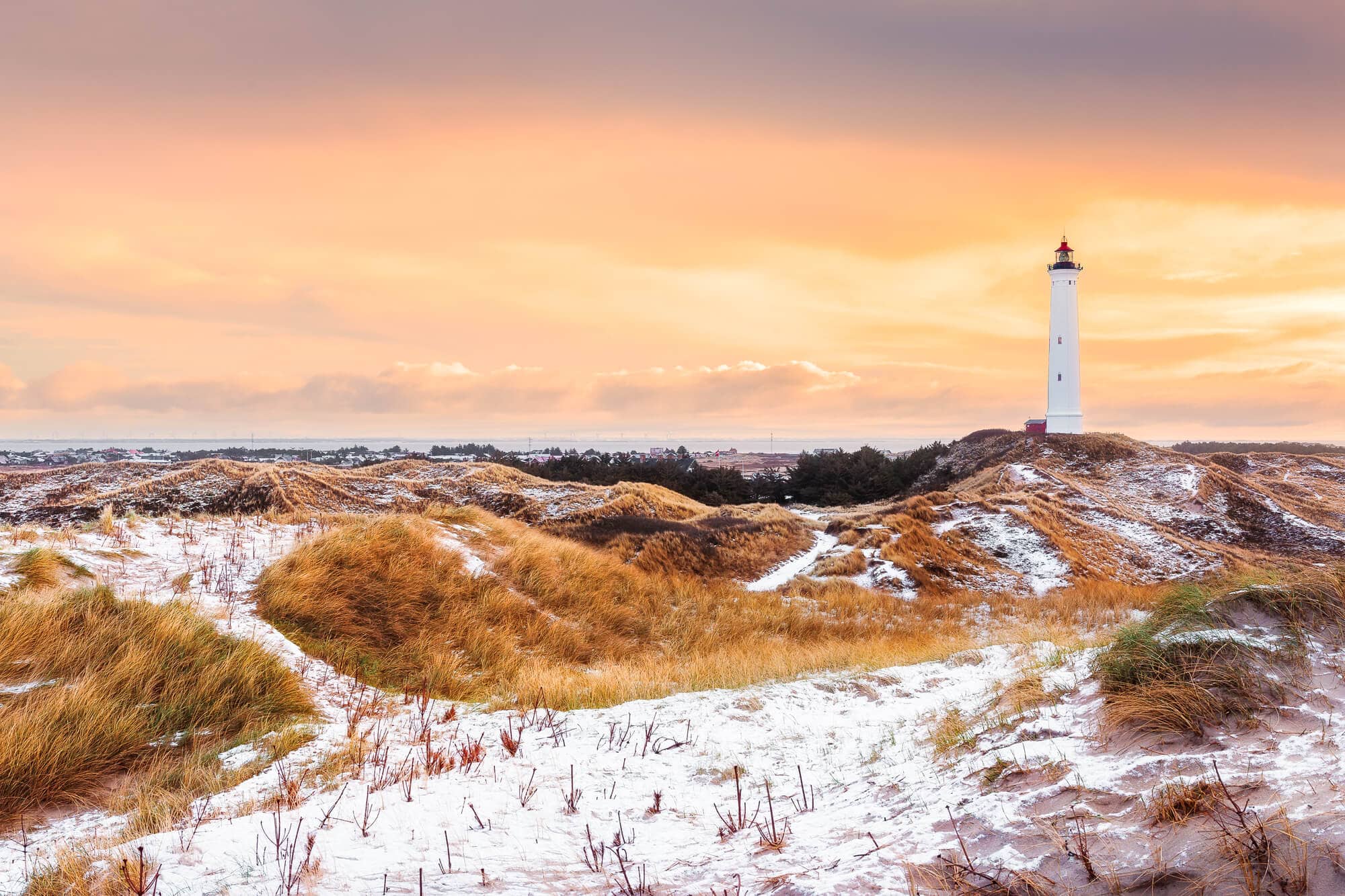
Another one of the best day trips from Aarhus during the summer months is Søndervig, located on the west coast near the Ringkøbing Fjord. Since the 19th century, Søndervig has been one of Denmark’s most visited seaside resorts.
It is the perfect place for a family holiday between sea and fjord. Especially now that you can experience the newly built Lalandia, which has just opened. A holiday center with everything the heart could desire for children of all ages.
🌟 You can check price and availability here >> Lalandia Holiday Center Søndervig
How to get there
The easiest way to get from Aarhus to Søndervig is by car. You’ll find Søndervig directly west of Aarhus, about 140 kilometers on the other side of the Jutland Peninsula. I recommend going by car so you have the flexibility to stop along the way. There are so many beautiful spots in this area.
Top things to do
One of the highlights of visiting Søndervig is its beautiful beaches, though keep in mind that this area gets a lot of wind, so lounging on the beach is only possible at the height of summer.
From May to October, you can visit their annual sand sculpture exhibition featuring insane sculptures that reach heights up to 7 meters and stretch for an impressive 200 meters. Søndervig’s pedestrian streets are lined with shops, cafes, and restaurants, and are a popular spot for a leisurely stroll.
Just south of town, you’ll find Lyngvig Lighthouse, a historic lighthouse located in the village of Lyngvig. The lighthouse was built in 1906 and stands at a height of 38 meters, making it one of the tallest lighthouses in Denmark.
I recommend also stopping by Ringkøbing, a charming old trading and harbor town, and Hvide Sande known for miles and miles of pristine sandy beaches.
10. Aalborg
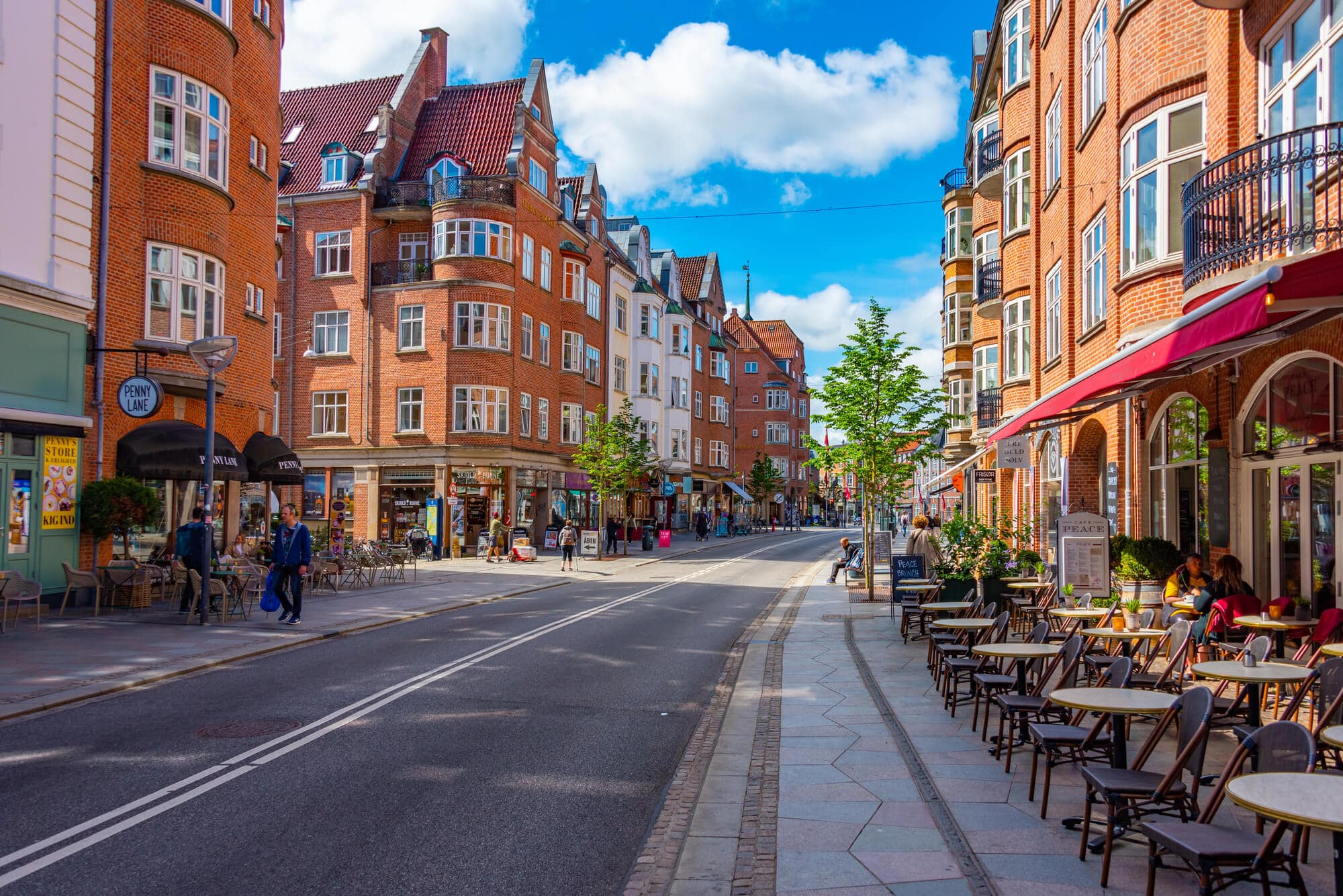
Aalborg is a charming city full of exciting experiences and hidden gems located in the middle of idyllic North Jutland. It is the perfect day trip from Aarhus if you’d like to experience the pulse of big city life in a walkable and cozy city.
How to get there
The easiest way to get from Aarhus to Aalborg is by direct train. The train journey takes approximately 1 hour and 30 minutes, and there are many trains running throughout the day. If you go by car, expect to spend around 1 hour and 20 minutes on the road.
Top things to do
One of the most popular attractions in Aalborg is the Aalborg Zoo, which is home to over 1,200 animals from around the world. The zoo is located in the scenic Kildeparken and offers a range of exhibits and activities for visitors of all ages.
Another must-see attraction in Aalborg is the Aalborg Tower, which offers stunning views of the city and the surrounding landscape. Visitors can take an elevator to the top of the tower and enjoy panoramic views of the city and the Limfjord.
Aalborg is also known for its beautiful waterfront, which is lined with charming cafes, restaurants, and shops. Visitors can take a leisurely stroll along the waterfront, enjoy a meal at one of the many restaurants, or take a boat tour of the Limfjord.
Experience Aalborg’s many wall paintings and learn more about the projects, the artist, their techniques and the thoughts behind the large and beautiful paintings on this popular walking tour.
🎨 Check price and availability here >> 3-Hour Street Art Tour in Aalborg
11. Billund
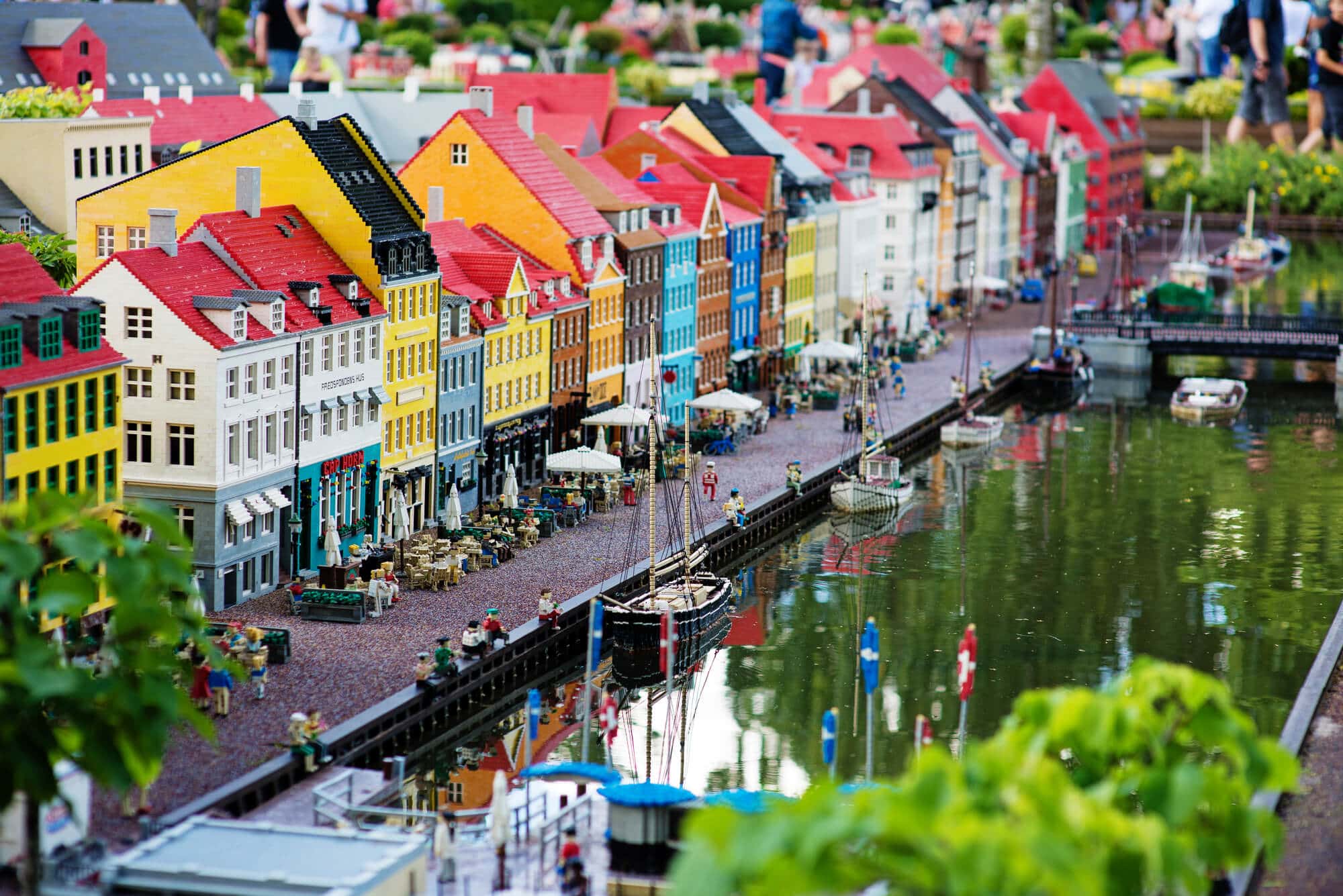
Legoland in Billund is the perfect day trip from Aarhus if you’re traveling with children. Or if you’re a grown-up Lego fan which is also totally cool!
Legoland is easily accessible from Aarhus and is located approximately 1 hour and 15 minutes west of the city. If you’re coming from Copenhagen and don’t feel like driving that far, you can book a private transfer here.
The park features a range of rides, attractions, and exhibits that are designed to appeal to visitors of all ages. Some of the most popular attractions at Legoland Billund include the Lego Ninjago World, the Duplo Land, and the Pirate Land.
Explore a range of exhibits that showcase the history and culture of Lego, as well as the creative process behind the toy brand. If you feel like an adrenaline top-up go on one of the many rides, including roller coasters, water rides, and kiddie rides.
During summer and holidays, you can also enjoy live shows, interactive exhibits, and other fun activities throughout the park. As with any other theme park, you’ll find several restaurants, cafés and shops. Definitely a fun day out for any age!
🎟 Book your Legoland Billund tickets >> Skip the line ticket with access to all rides
Popular Denmark guides
- Two unforgettable days in Aarhus: Denmark’s happiest city!
- 7 stunning castles & manors in Denmark you can actually stay in
- The ultimate Denmark bucket list: 101+ awesome things to do
Remember to pin for later 😉
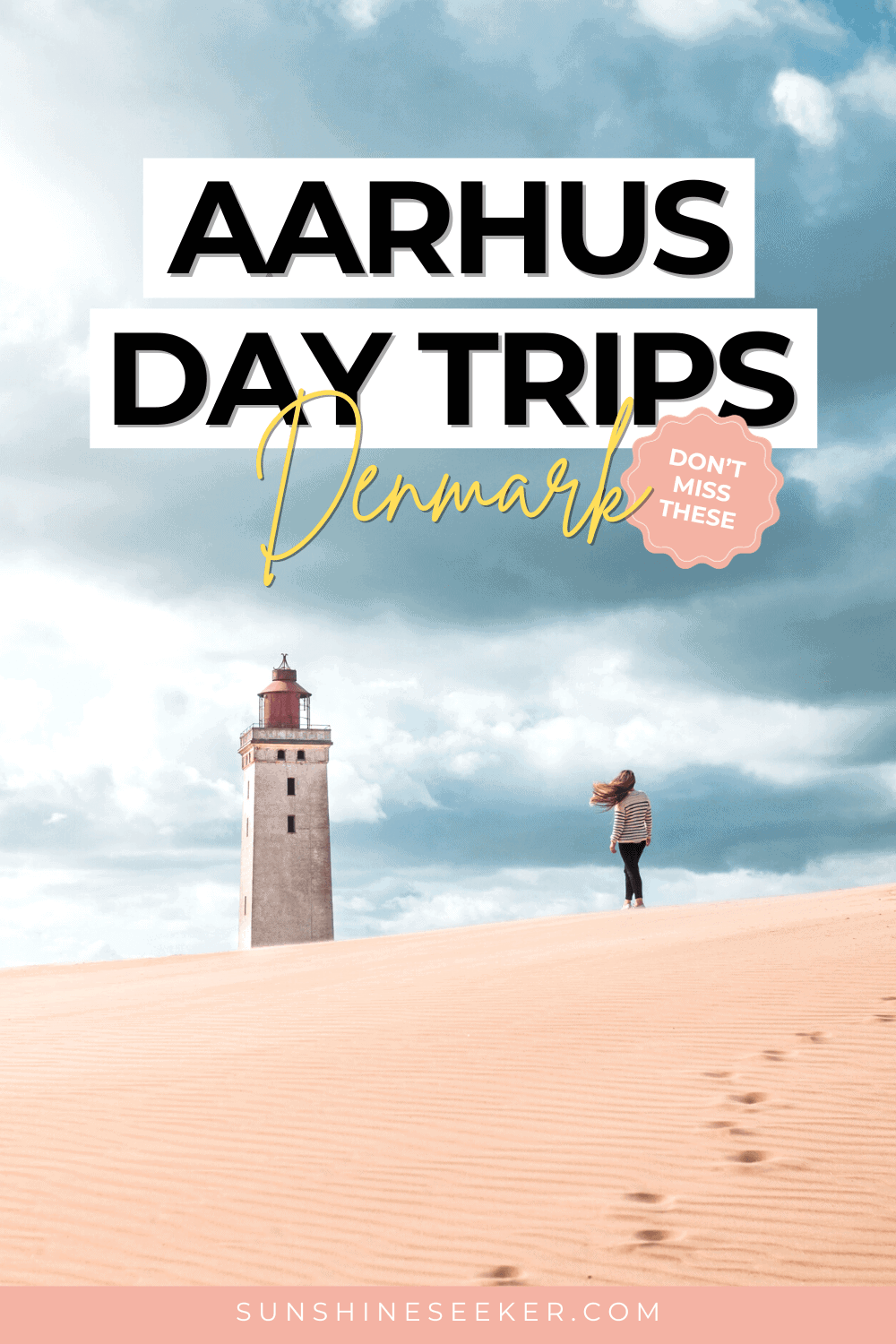





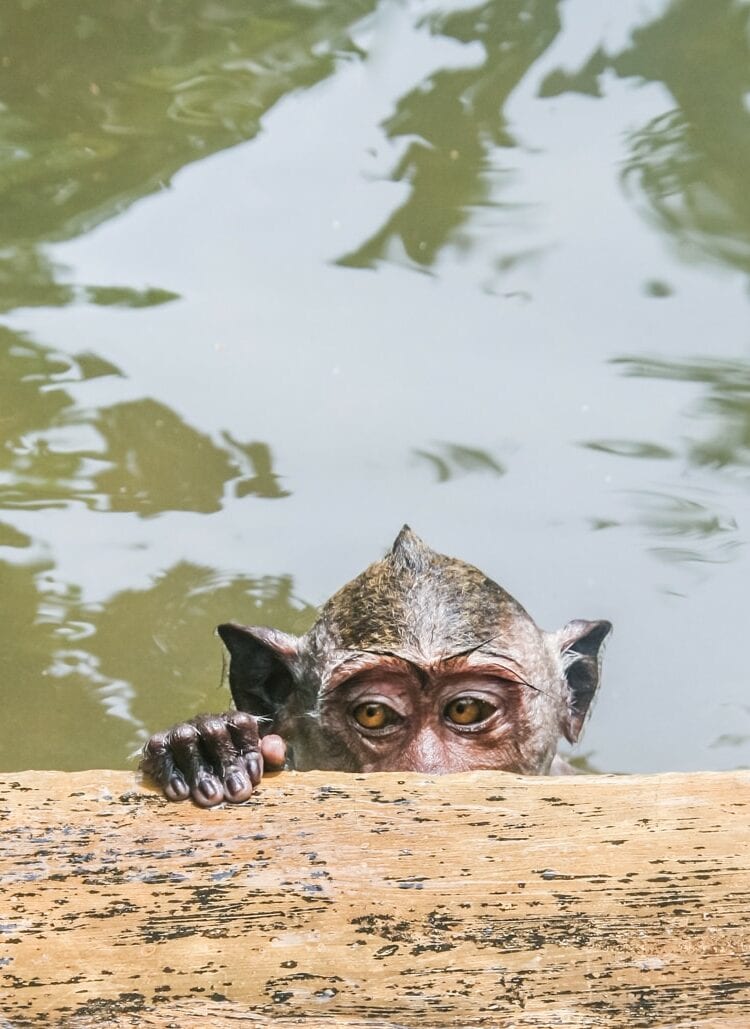
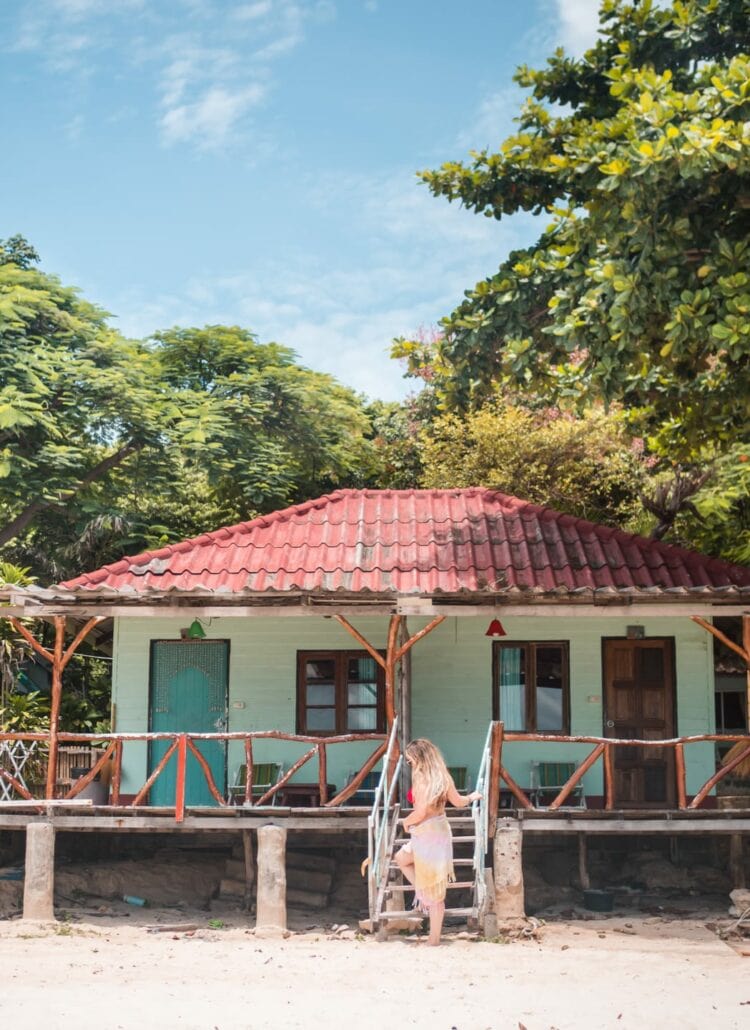

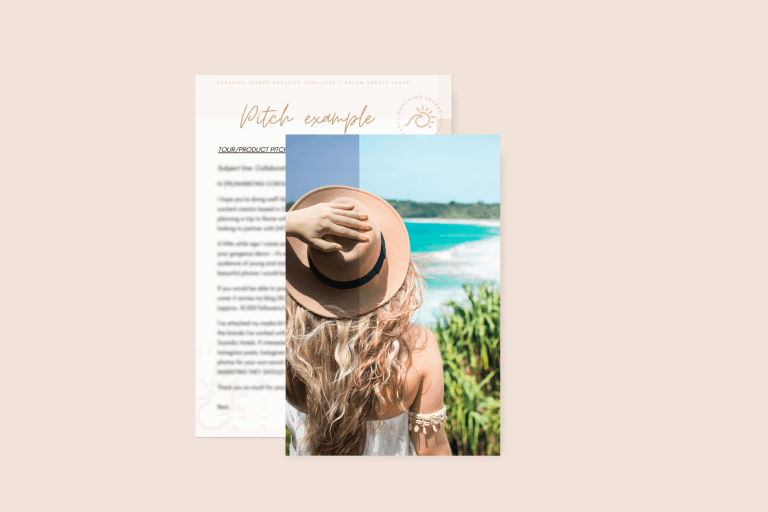


Leave a Reply